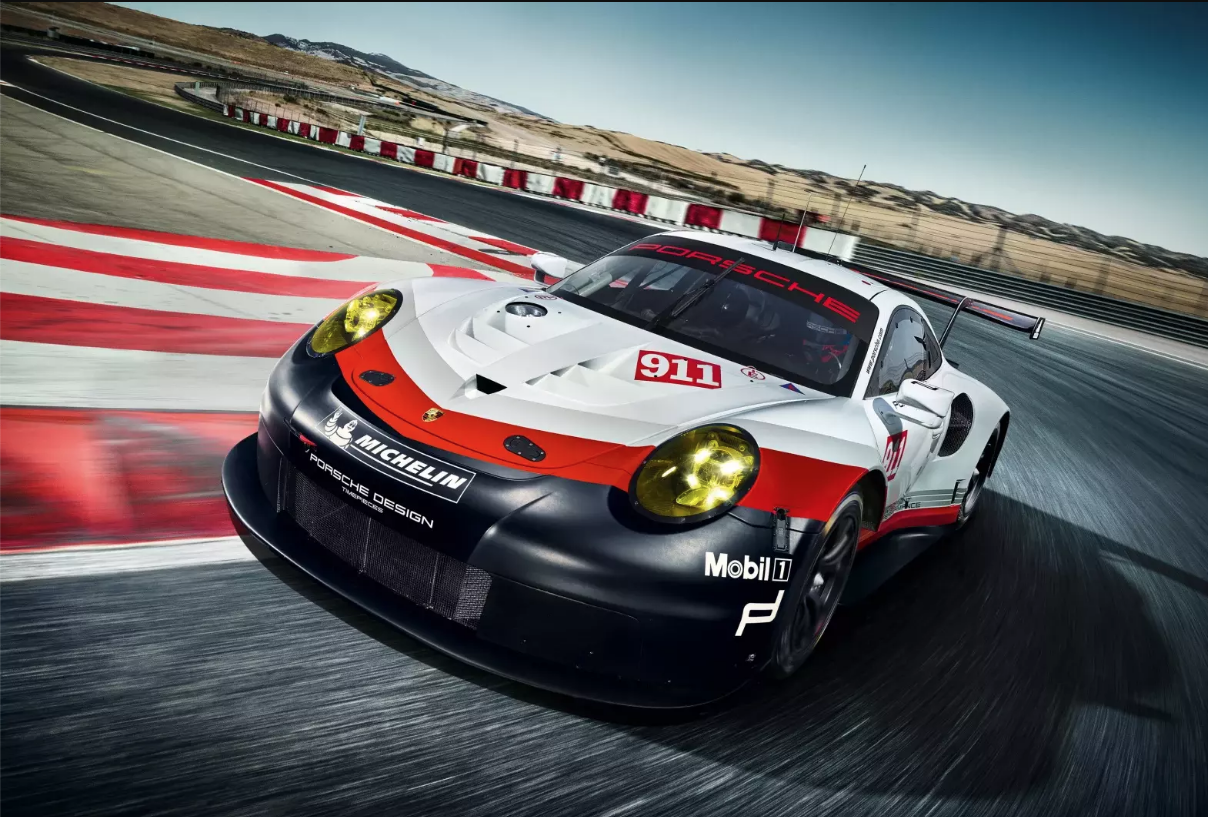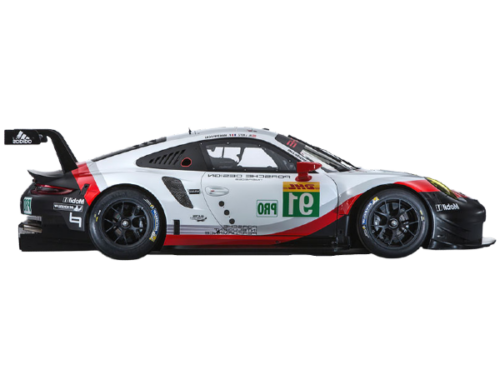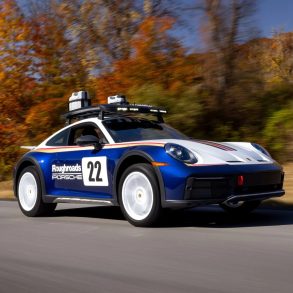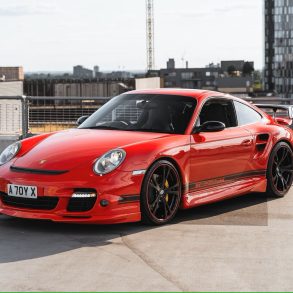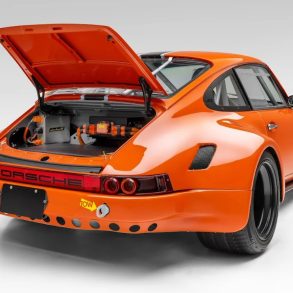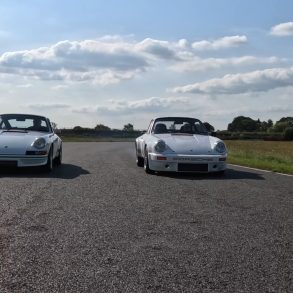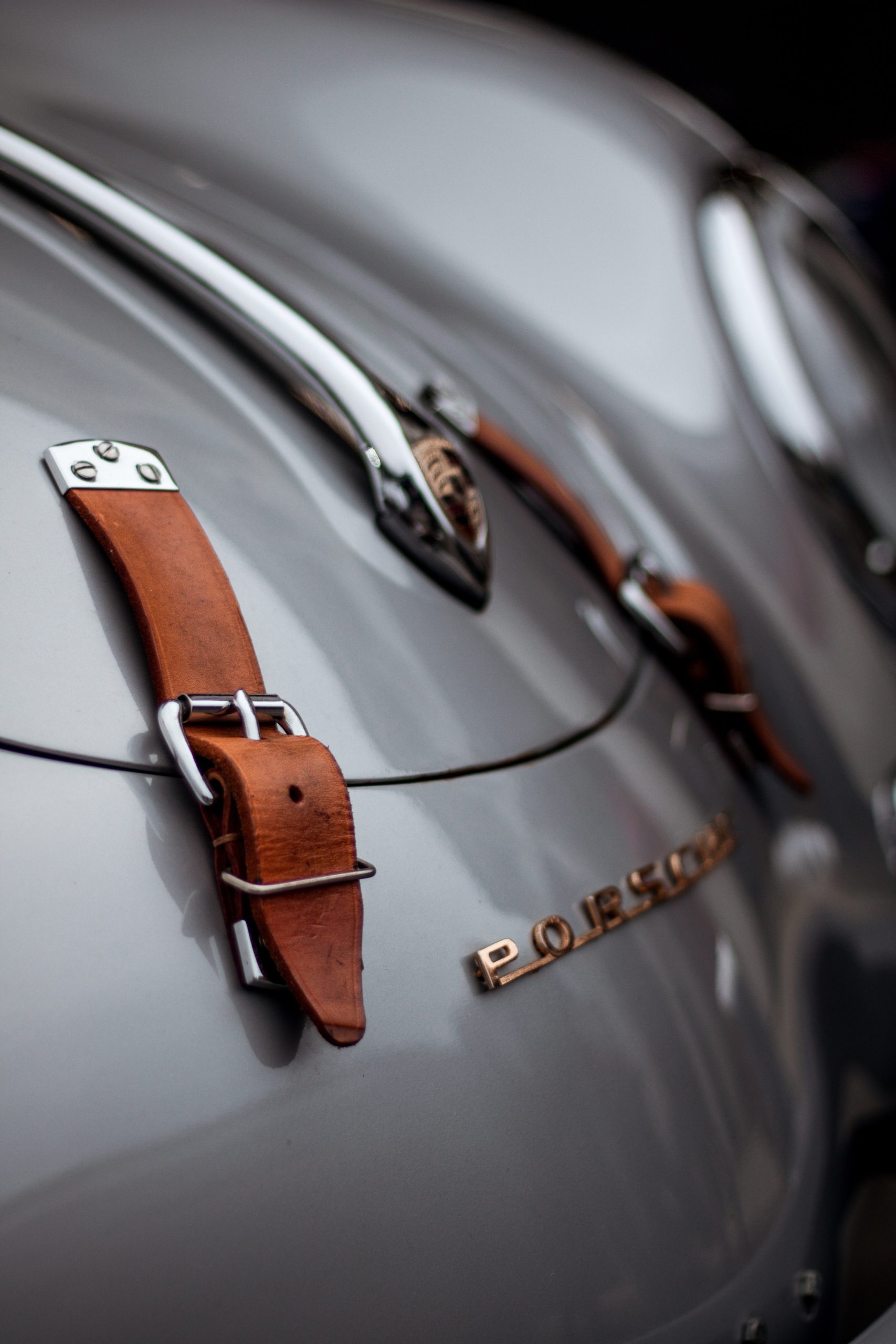(2017 – 2019) Porsche 911 RSR 4.0 (991.2) – Ultimate Guide
Official photos: 2016 November 16 (prototype 2016 May 12) / Premiere: 2017 January 28-29, Daytona 24h / Engine: 4.0 B6 normally aspirated, 375 kW (depends on air restrictor) / Gearbox: Sequential, 6-speed with 3-disc clutch, magnesium casing / Weight: 1243 kg/2740 lb by regulations
Two decades after the different 911 GT1 cars – 993 GT1 ’96, 993 GT1 Street, 996 GT1 ’97, 996 GT1 Street, 996 GT1 Evo ’98 – the mid-engined 911 is back! In order to install a proper diffuser under the rear end of the 991, the engine had to make room for it and the engine/transmission unit was rotated 180 degrees. The 911 was Caymanized, so to speak. Now you probably remember when the Cayman came out in 2005, it was said to handle better than the 911. The wheelbase of the 991.2 RSR was extended to 2516 mm. In comparison Cayman GT4 has 2484 mm, 991.2 GT3 Cup has 2456 mm and 991.2 Carrera/Turbo have 2450 mm. So, the rear wheels were moved back 1.3-2.6″/32-66 mm depending on how you look.
The extended rear diffuser, a top-suspended rear wing and the new side mirrors help to increase downforce with reduced drag. While the 911 GT1 cars were the ultimate mid-engined 911s with their turbocharged engines, the FIA rules restrict the engine power and there was no reason to equip the 991.2 RSR with a turbo engine. The normally aspirated 4-litre flat-6 was taken from the 991 GT3 R (used also in the 991 GT3 Cup 4.0).
The 991.2 RSR features a radar-supported Collision Avoid System which means now the faster LMP prototypes are detected behind early enough and misunderstandings can be avoided. On a cockpit monitor arrows indicate when vehicles are behind. Depending on the colour of the arrows, the driver knows whether the trailing car is coming closer or falling back. For the driver safety, the seat is now closer to the center of the car and is rigidly mounted (a new FIA rule). The movable pedal box (as well as brakes), come from AP Racing.

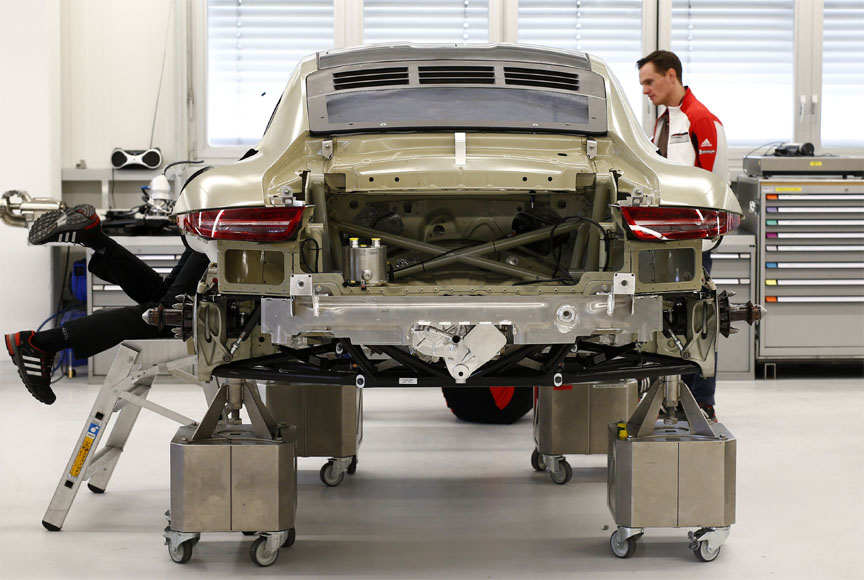
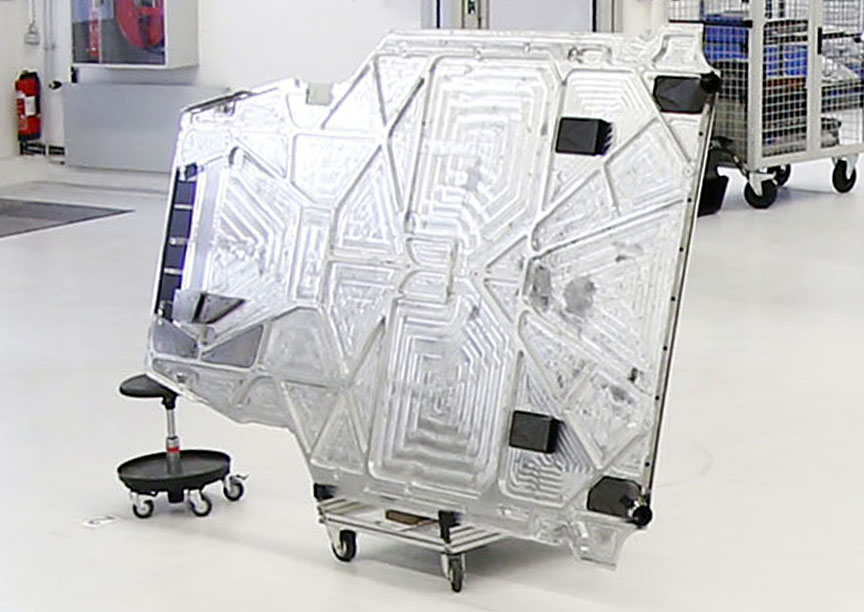
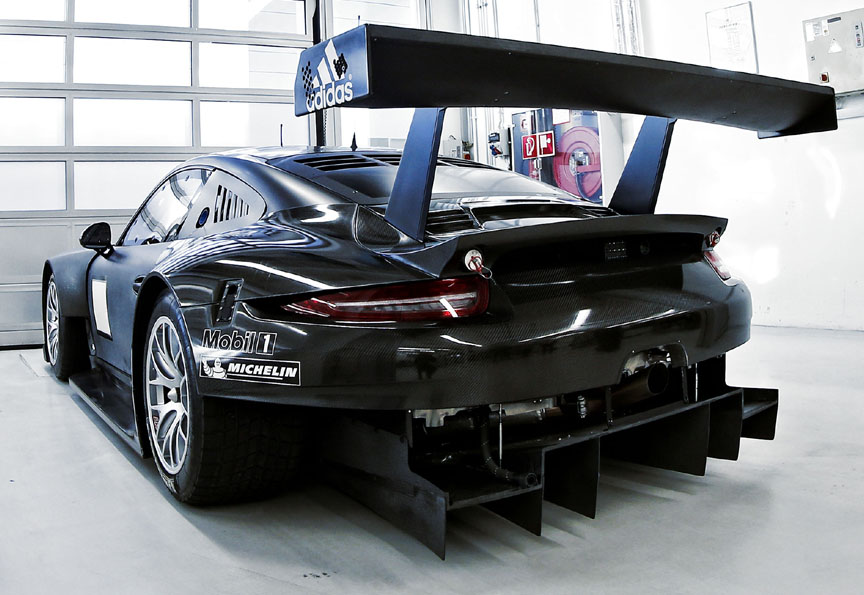
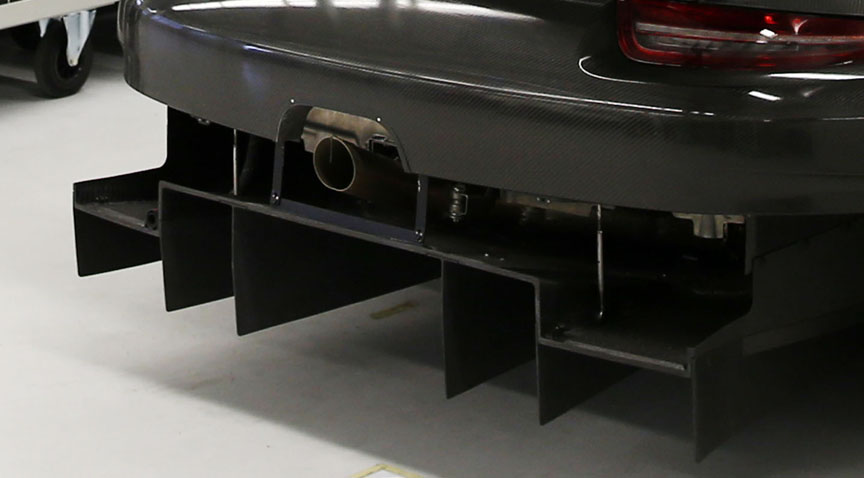
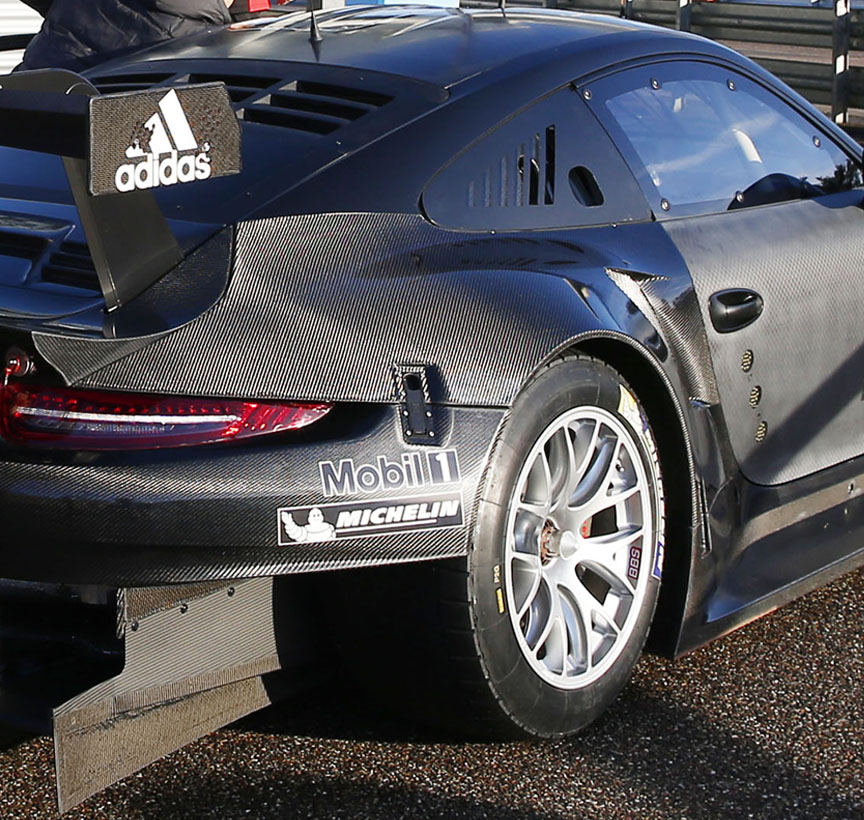
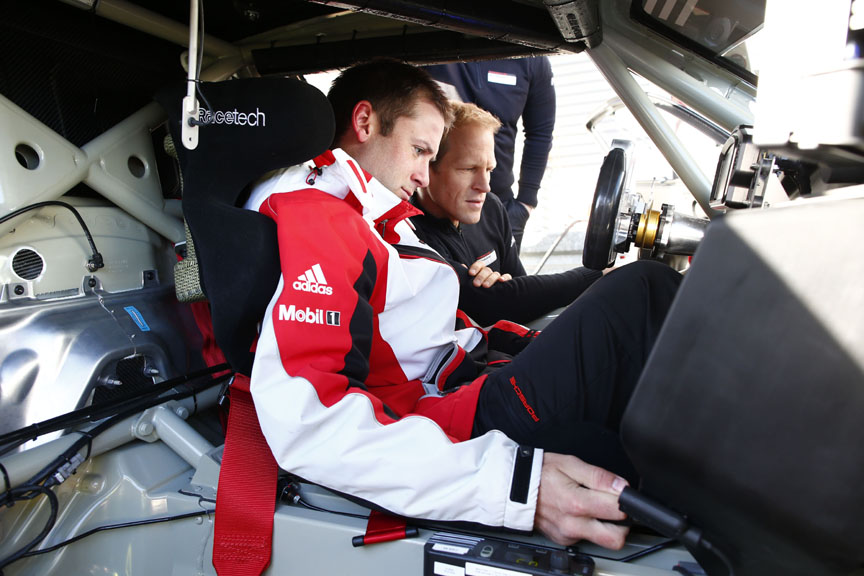
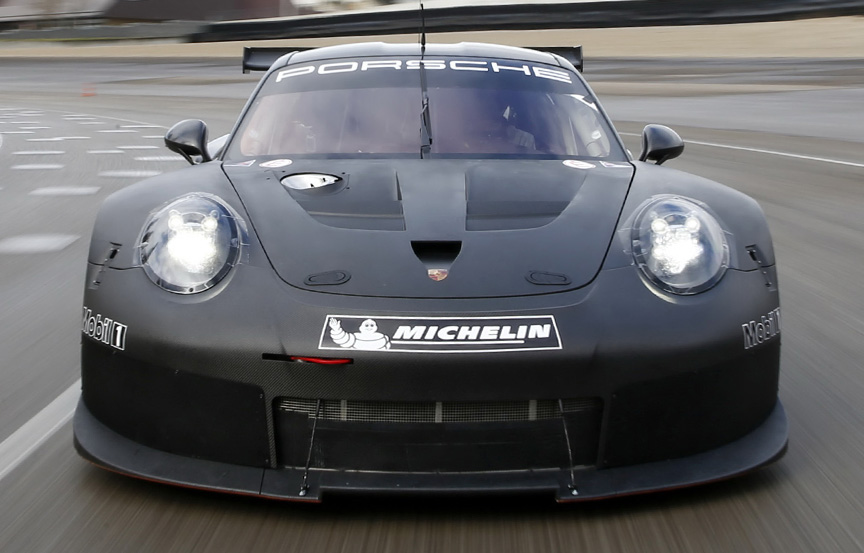
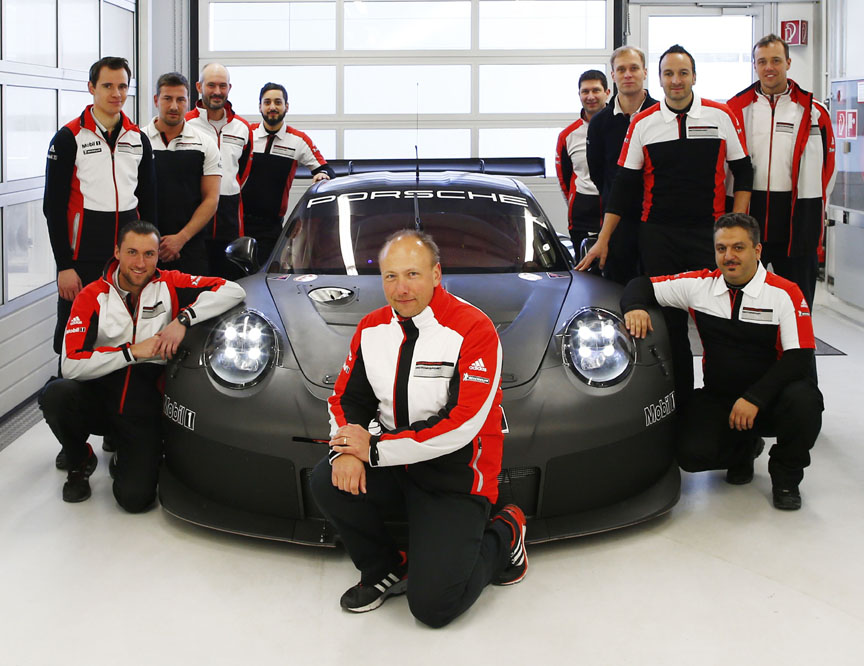
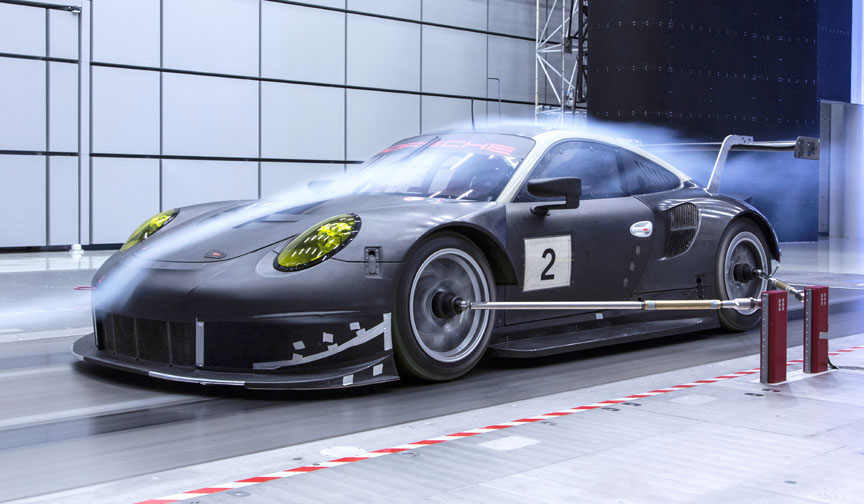
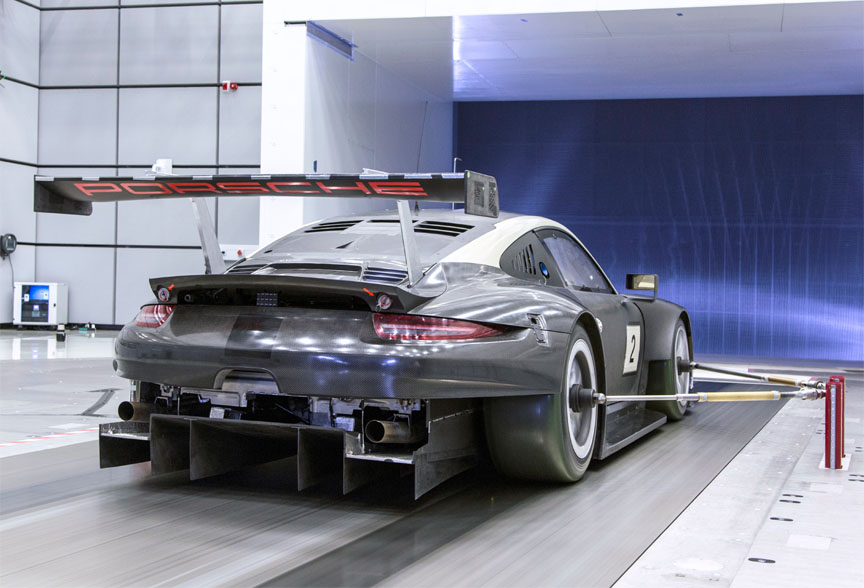
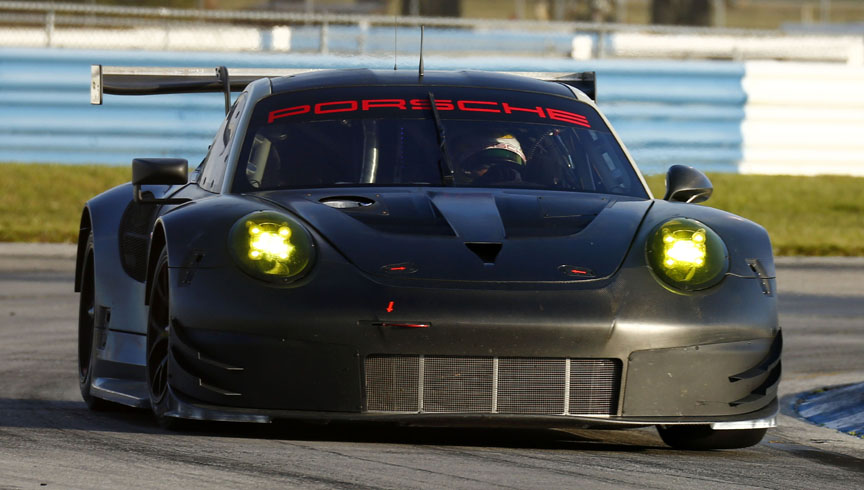
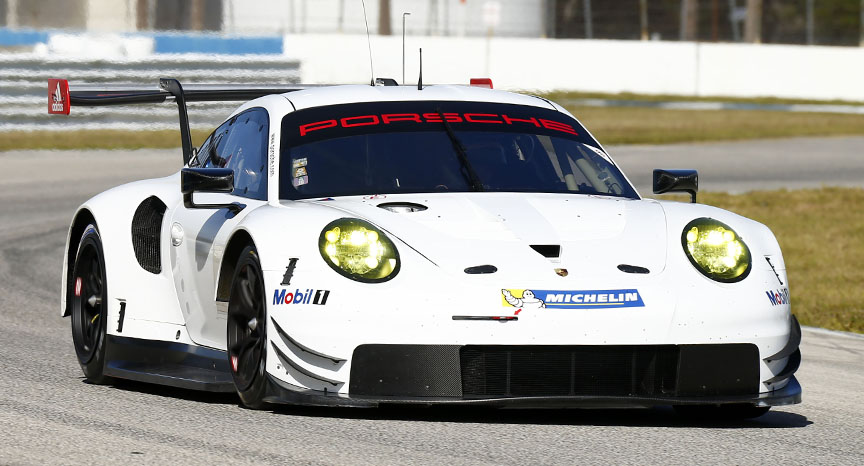
Between March and November 2016, the prototypes were tested for a total of around 22.000 miles/35.000 km which is more than with any previous Porsche GT racing car.
7 RSR were built by Porsche Motorsport for the 2017 racing season: 3 for testing, 2 for the FIA World Endurance Championship and 2 for the IMSA SportsCar Championship. It took 4 employees 10 working days to build one 911 RSR.
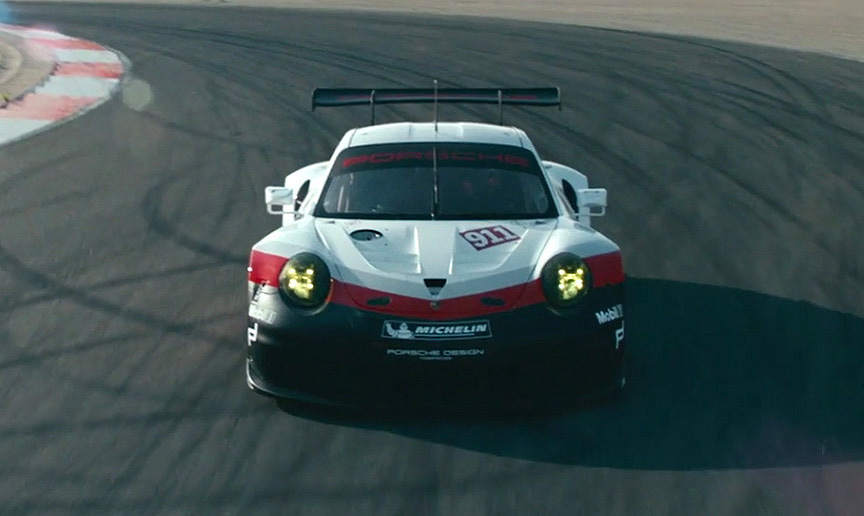

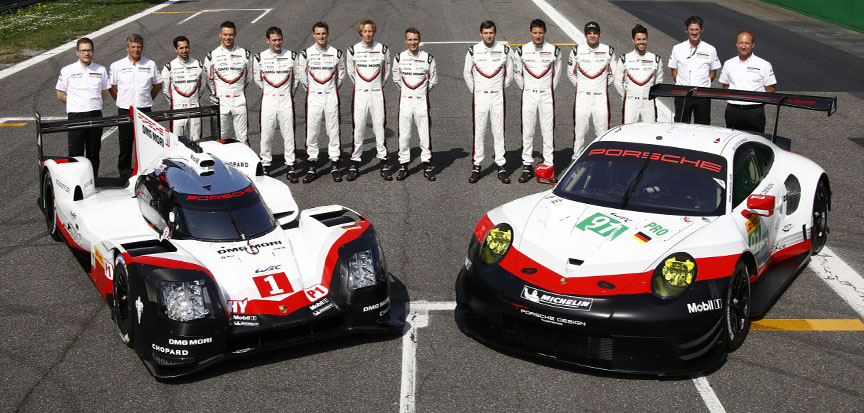
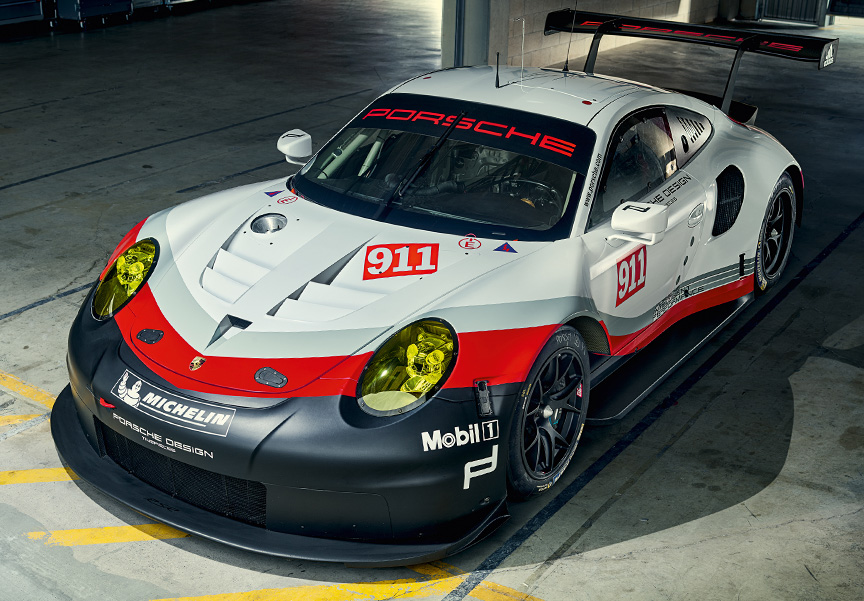
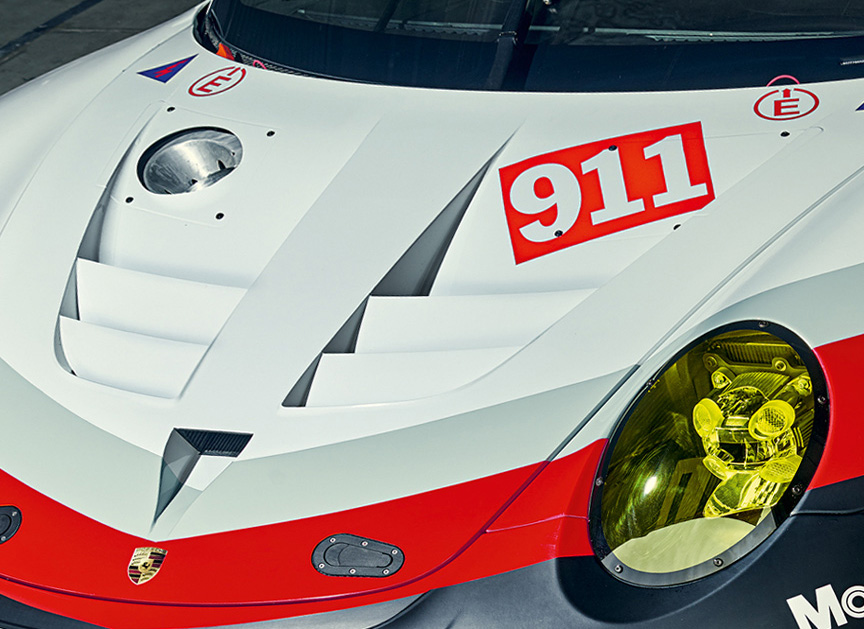
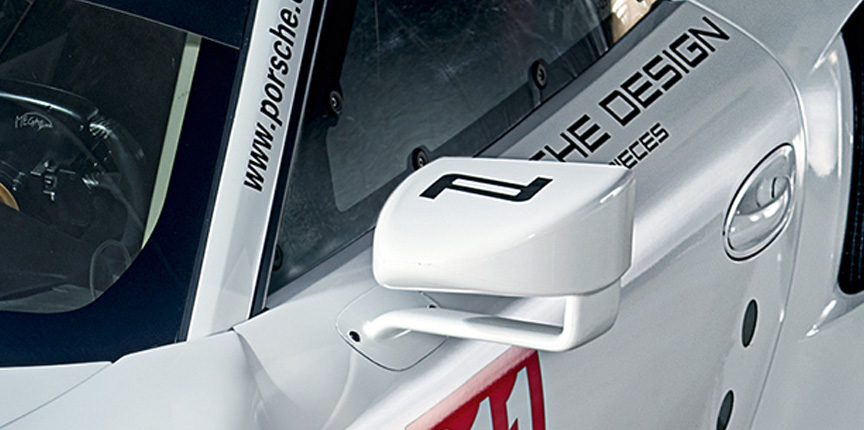
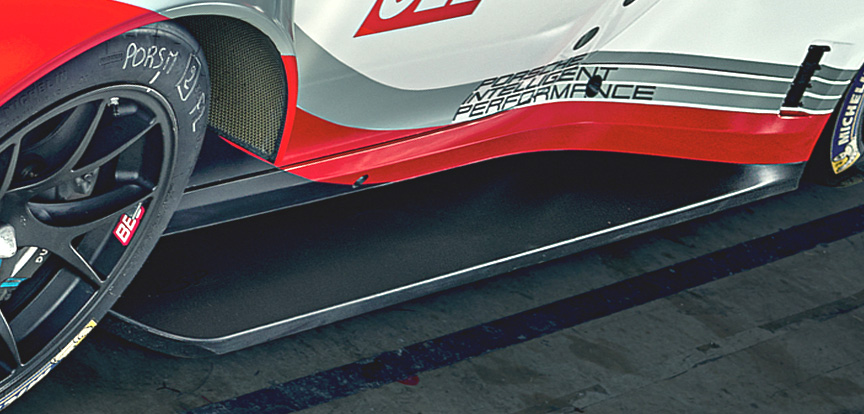
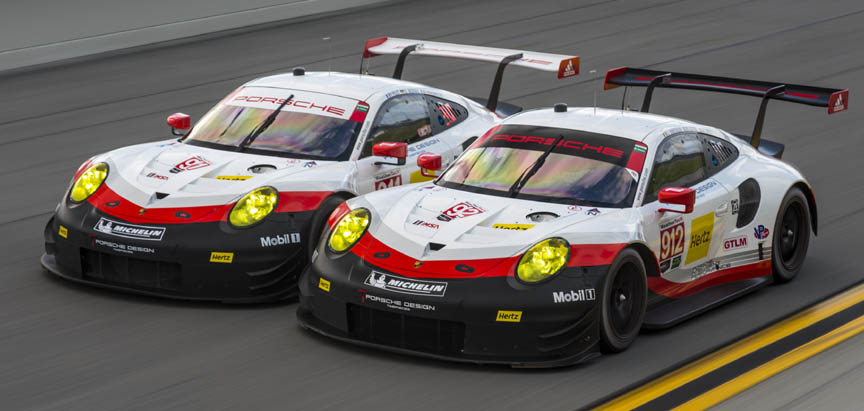
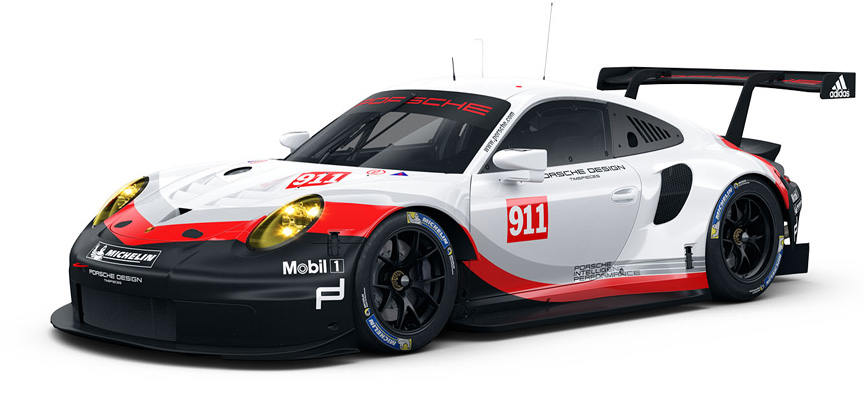
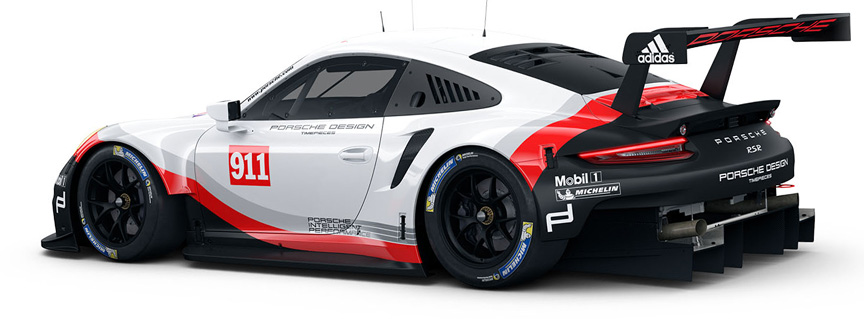
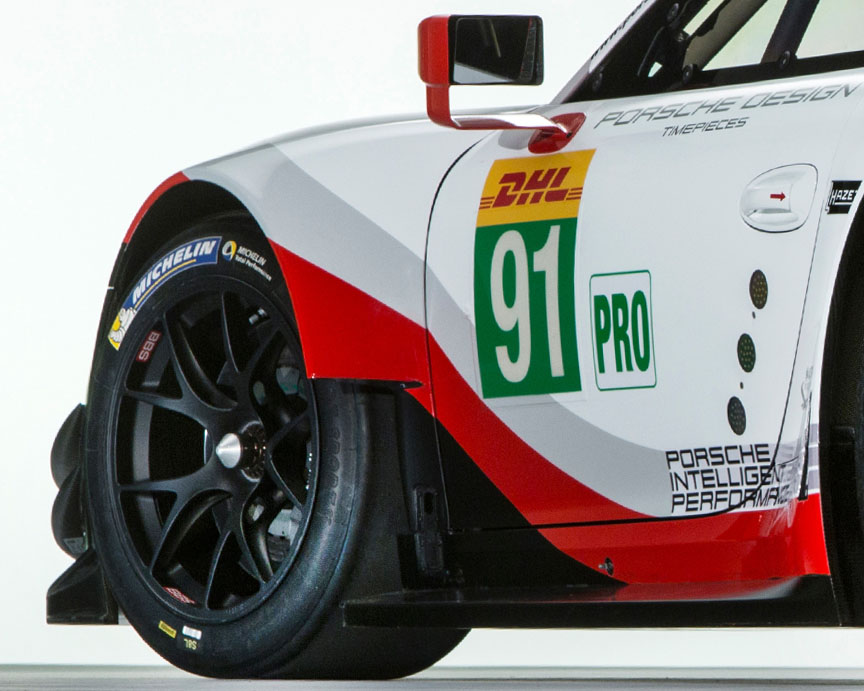
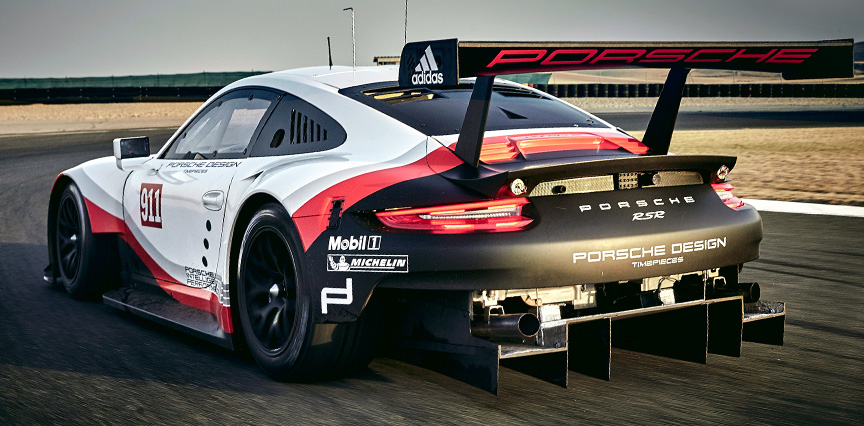
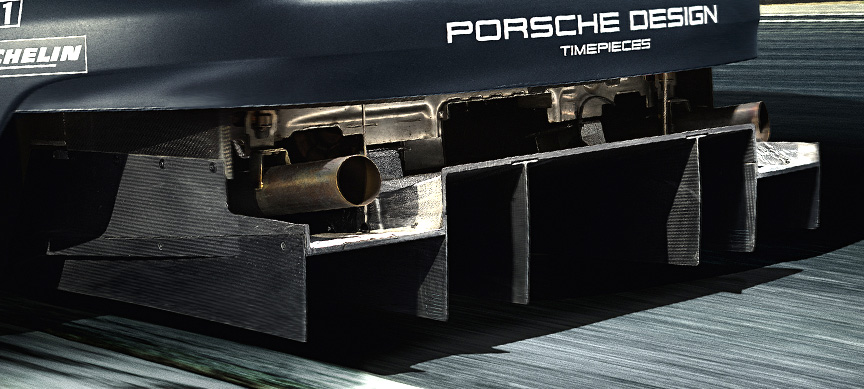
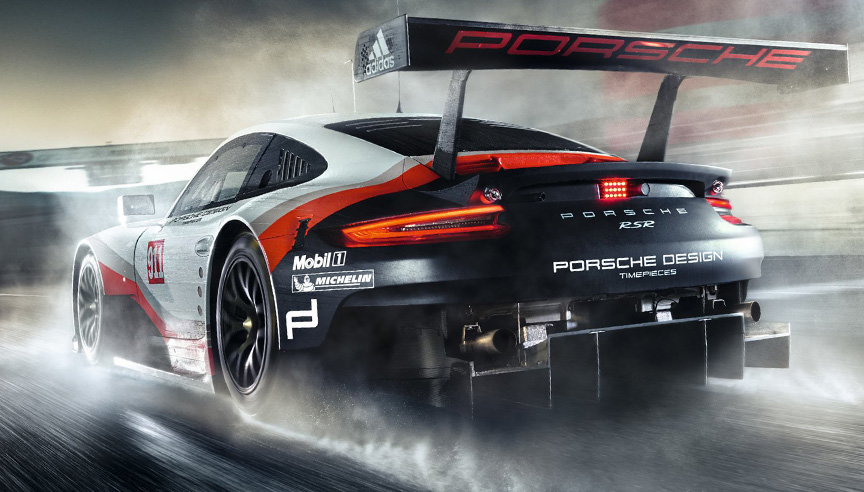
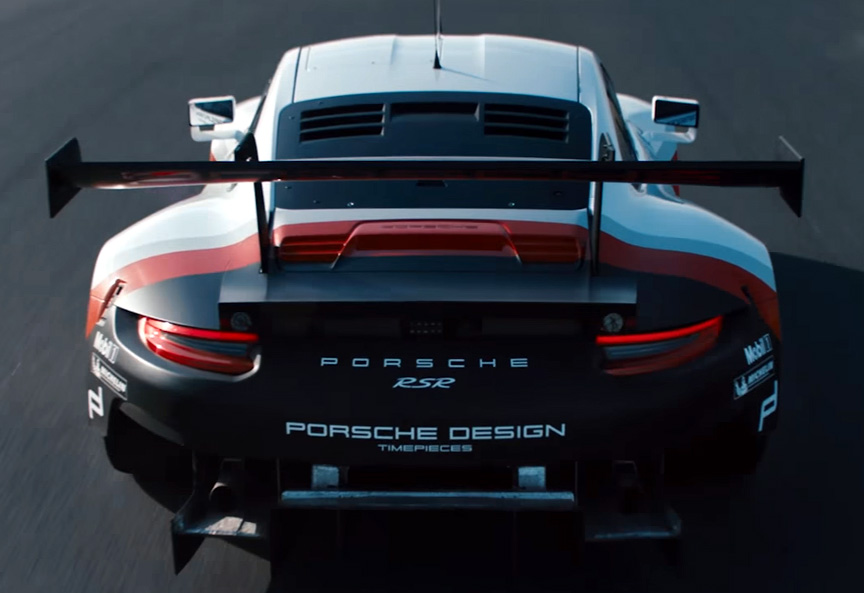
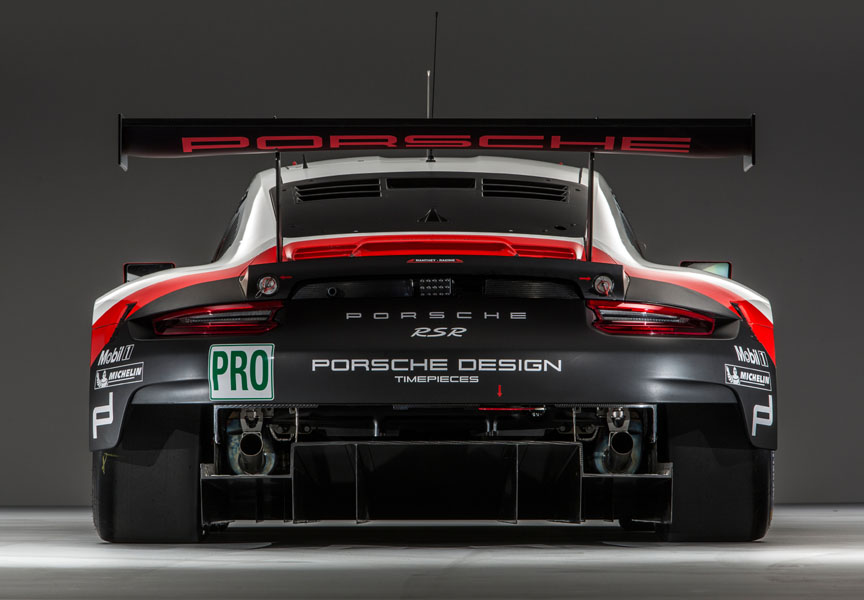
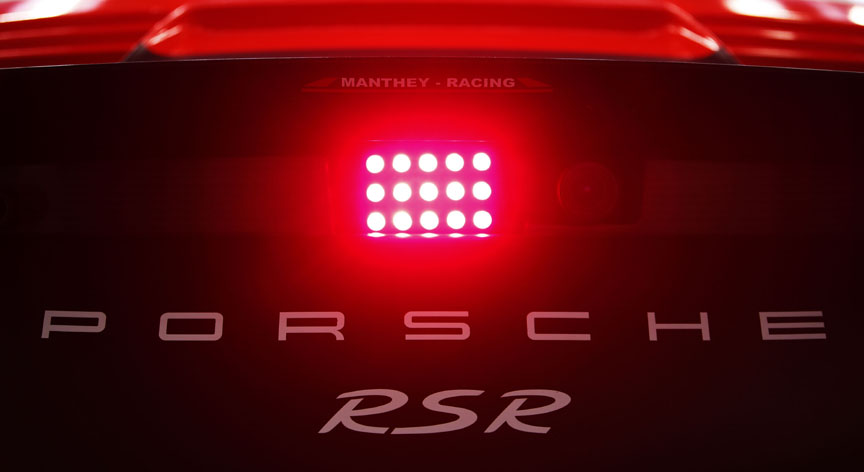
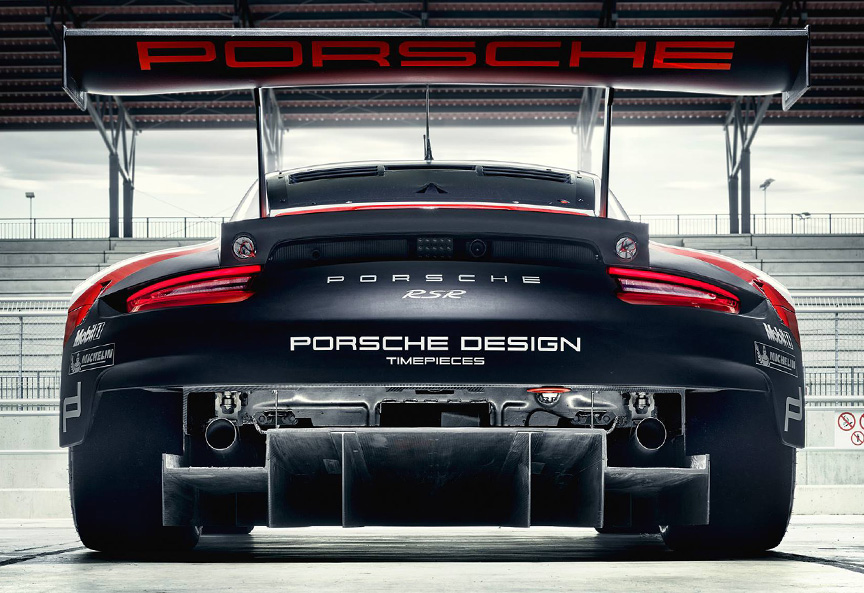
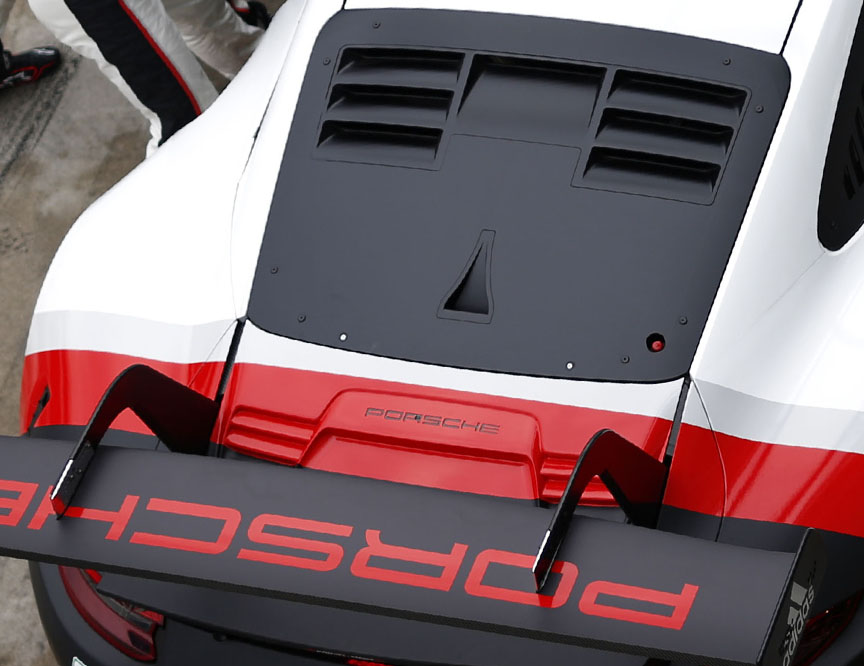
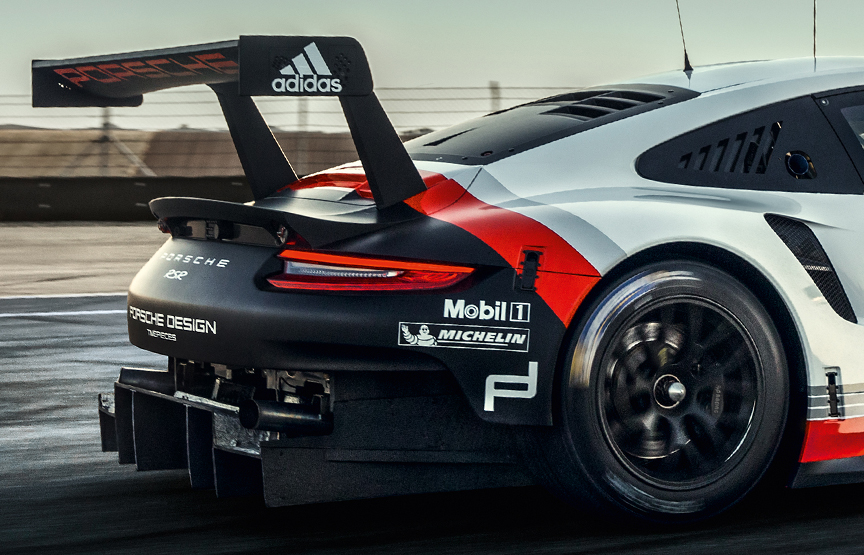
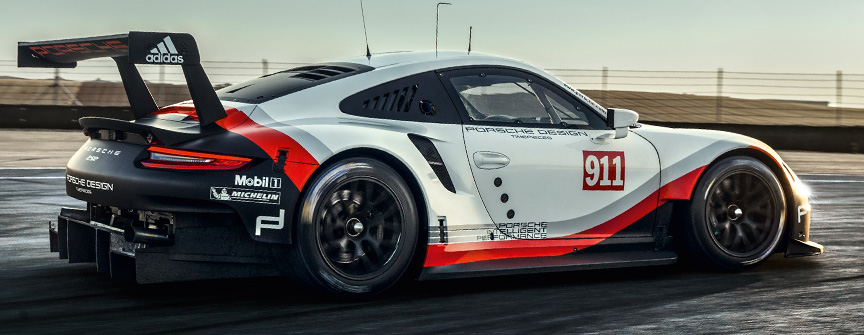
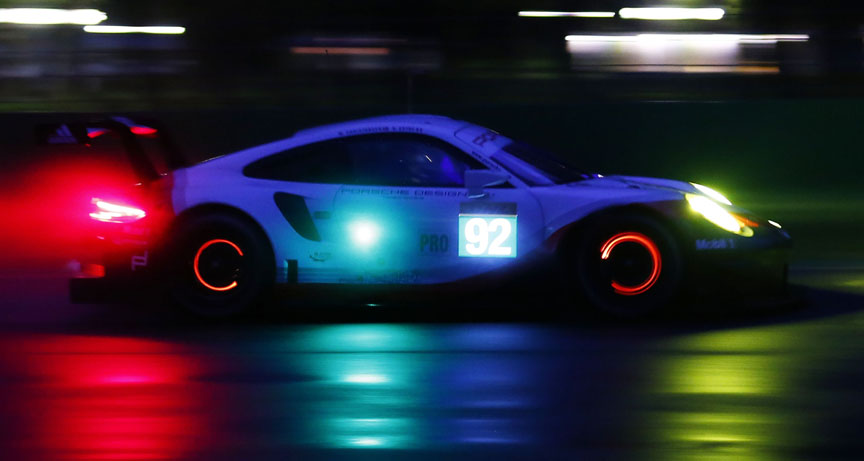
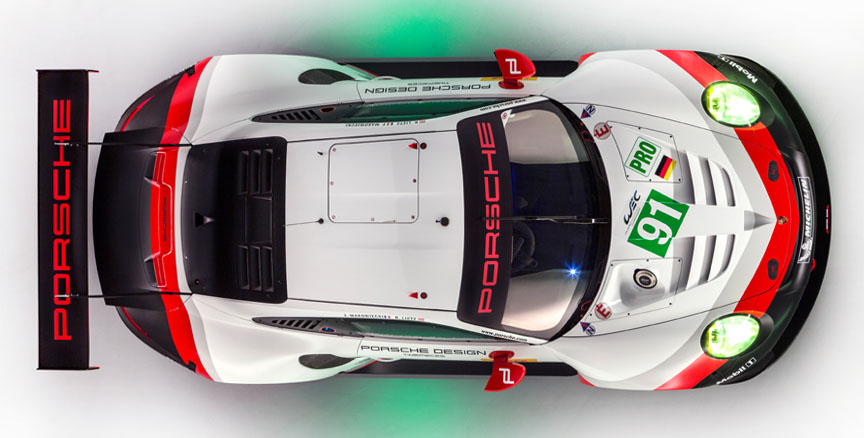
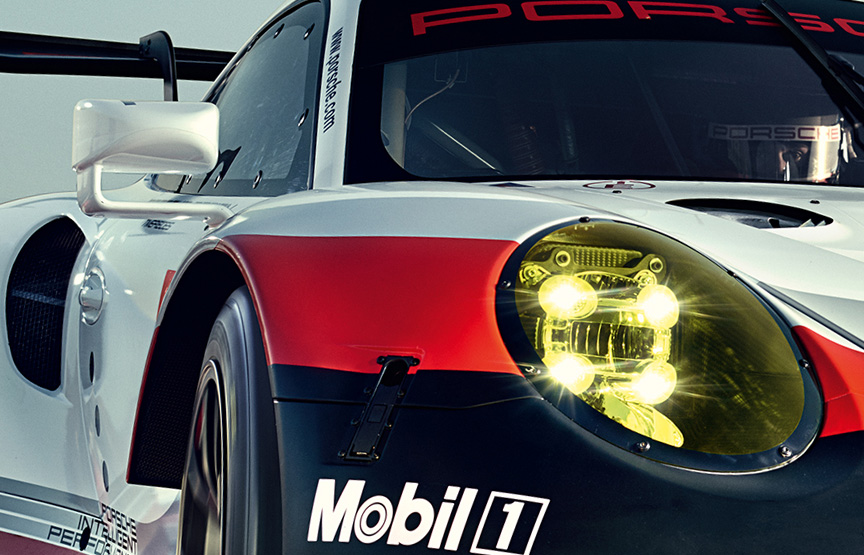
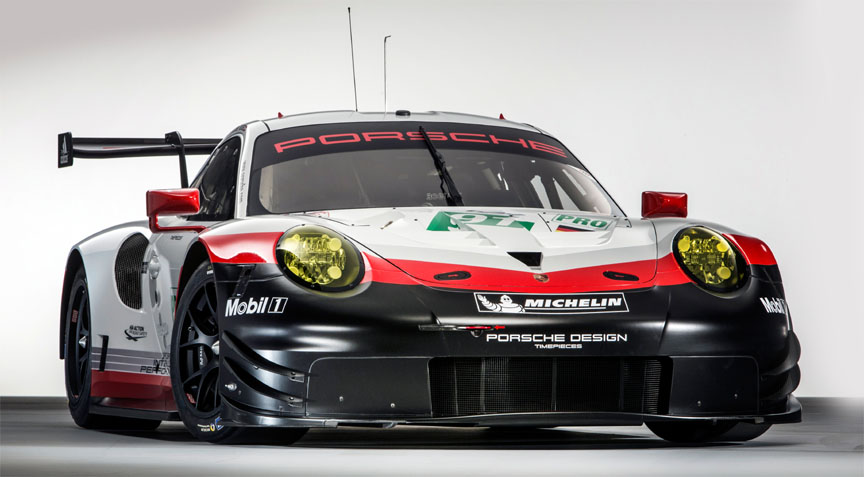
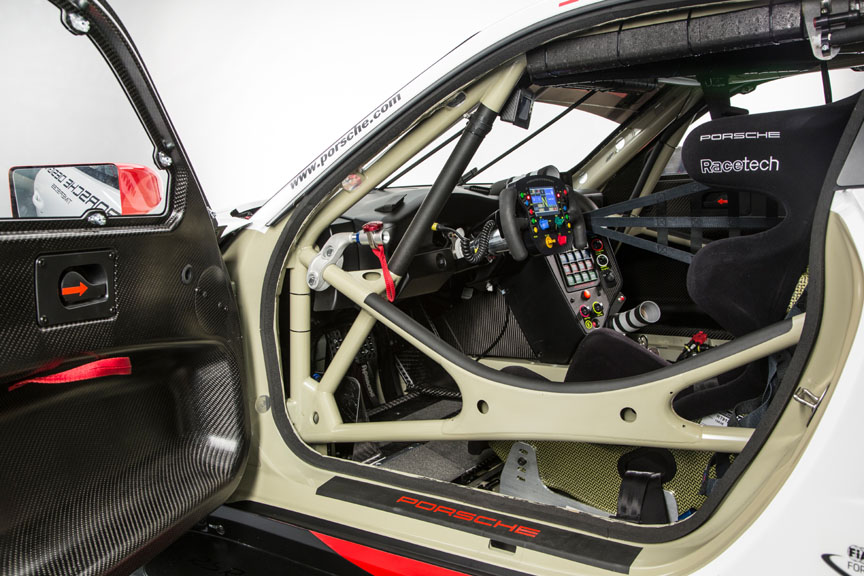
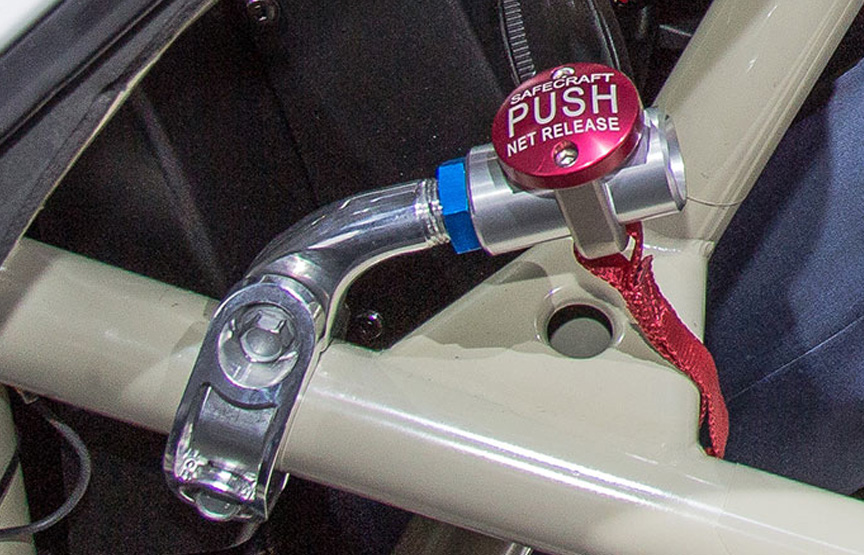
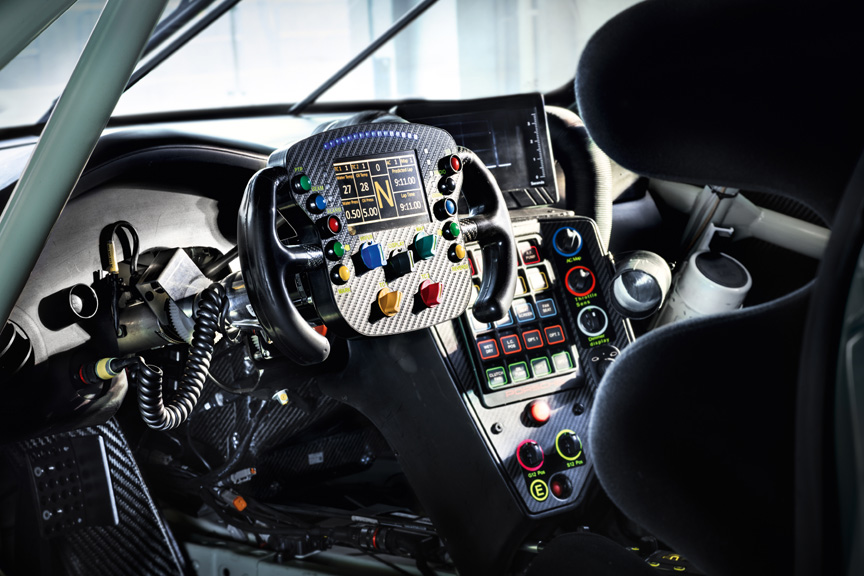
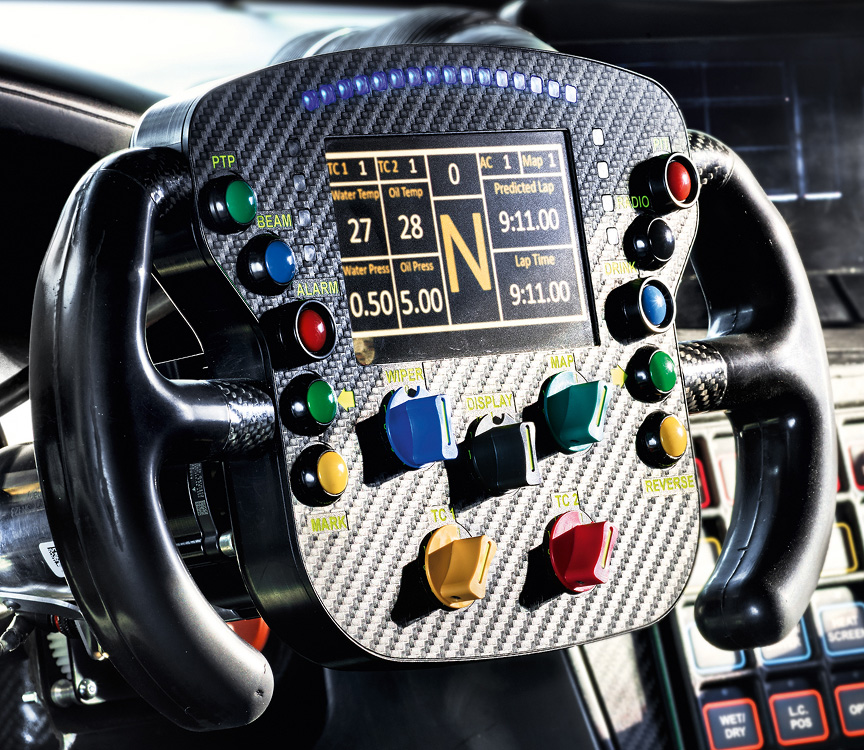
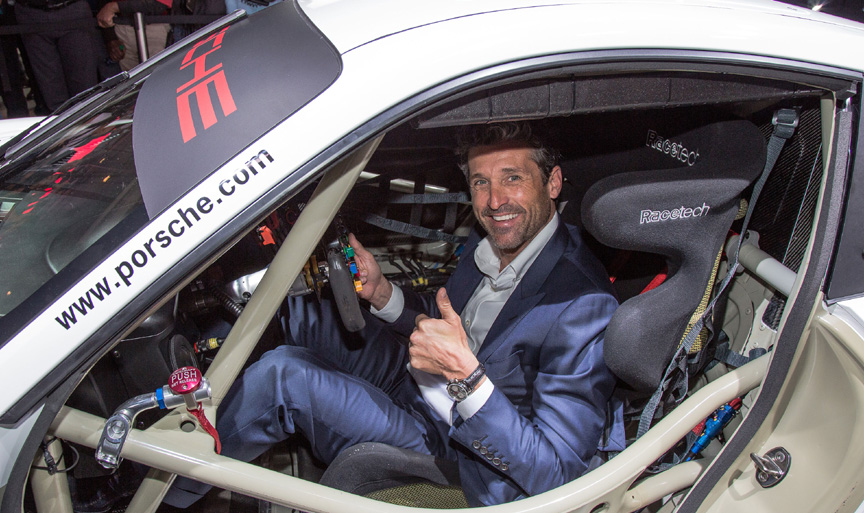
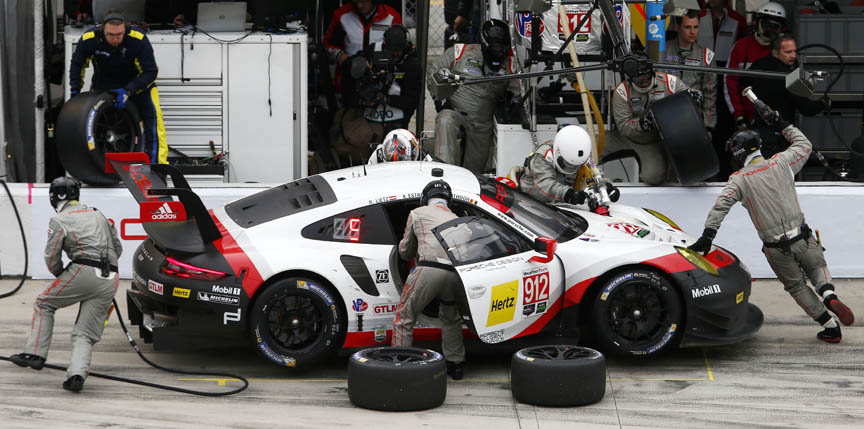
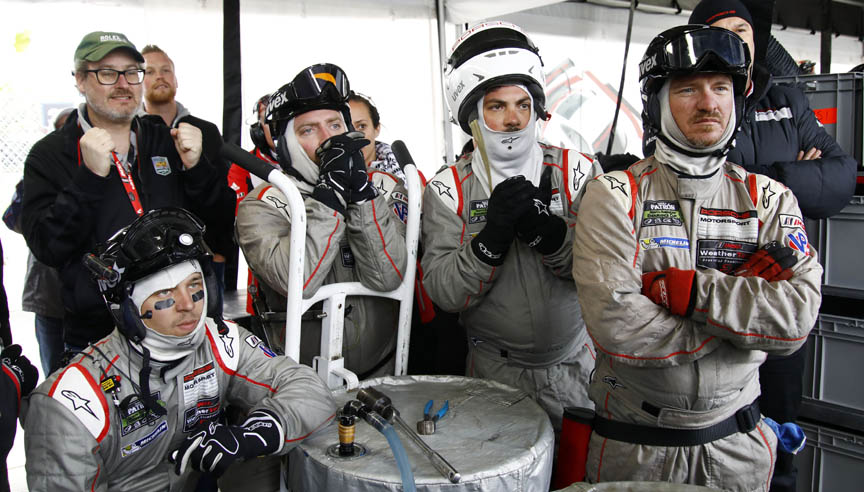
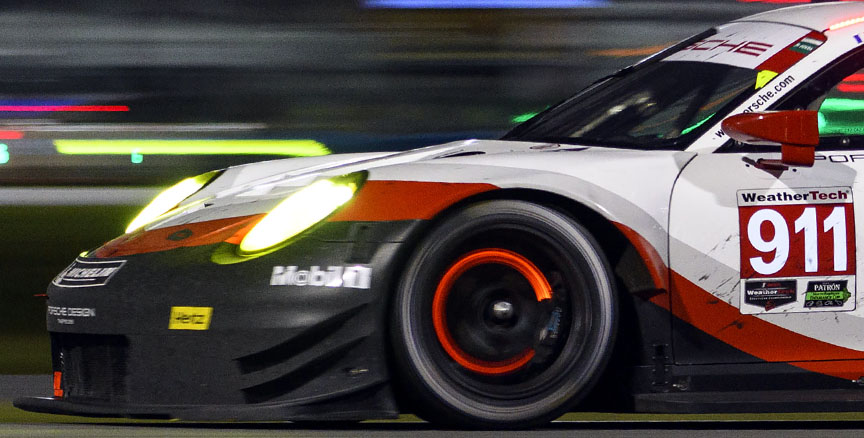
The GT LM class was so competitive at 2017 Daytona 24 hour race that seven (!) competitors finished the race within 7 seconds! While in the middle of the race Porsches were 1-2 in class, the final GT LM result was: 1. Ford GT, 2. 991.2 RSR, 3. Ferrari 488, 4. Corvette, 5. Ford GT, 6. 991.2 RSR, 7. Ford GT. Remember, all they covered 652 laps and were just 7 seconds apart after 24 hours! Thanks to BoP (Balance of Performance) rules the cars are very equal and this makes the races really interesting to follow.
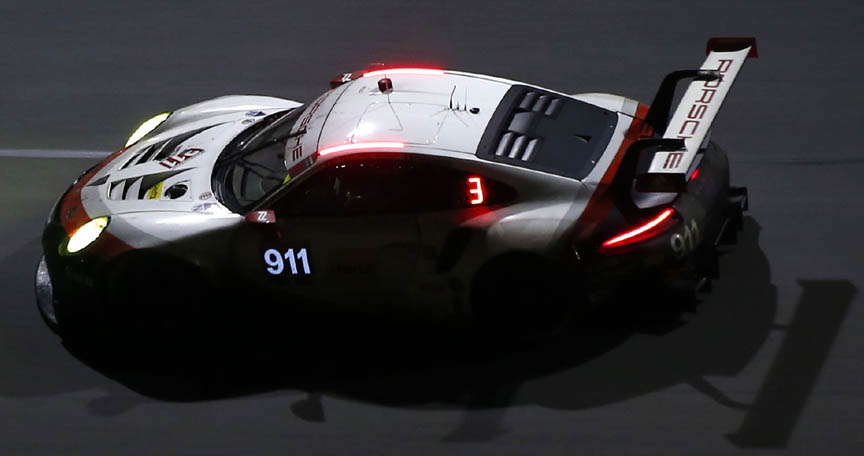
Sports car racing is not a subject of public interest in USA and therefore Daytona 24 hour race cannot be compared to the Le Mans 24 and Nürburgring 24 hour races which gather more than 200.000 spectators. No spectators, no money, IMSA has to lean even on alcohol producers. The Daytona 24 drivers had to hold alcohol bottles in their hands on the podium. Really?
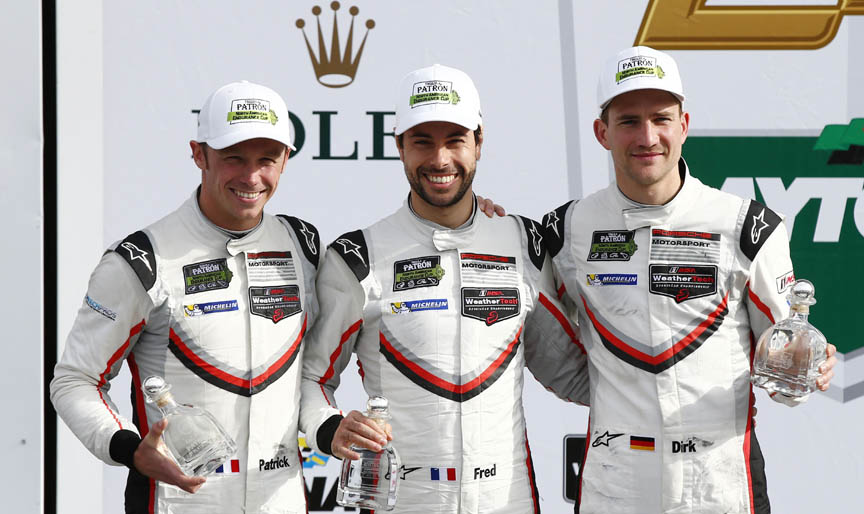
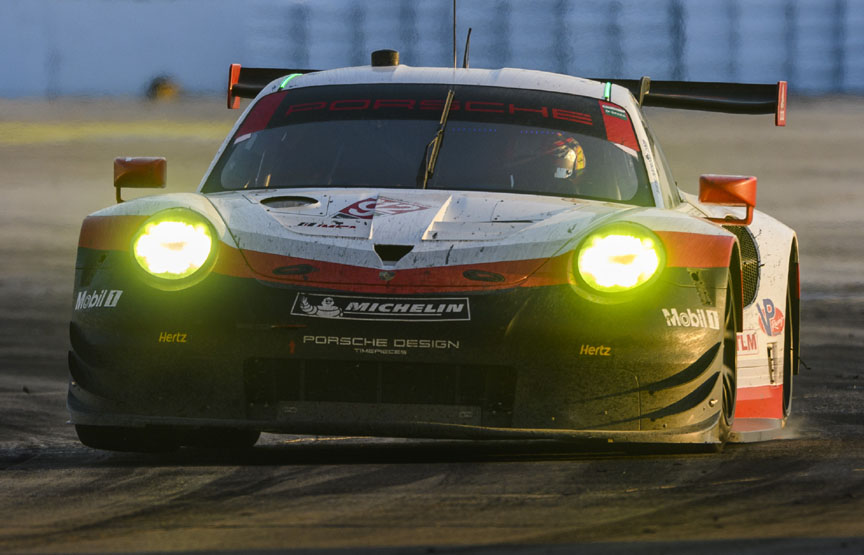
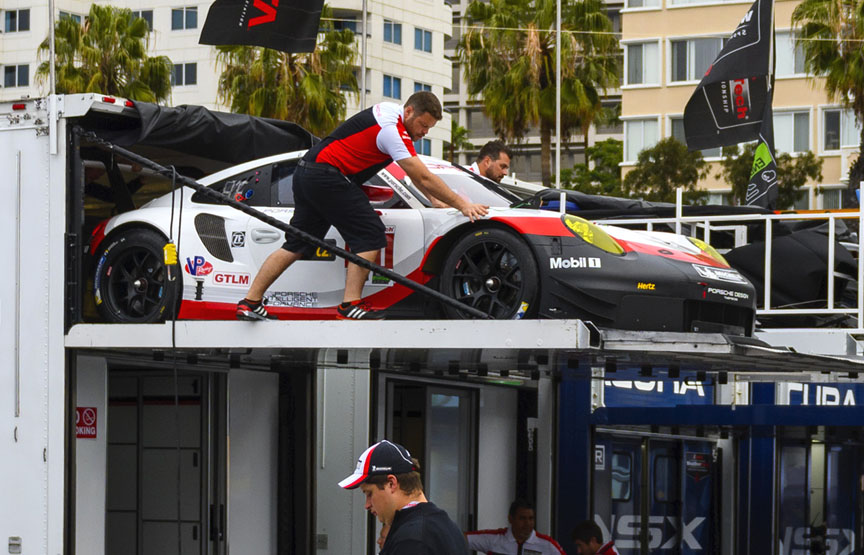
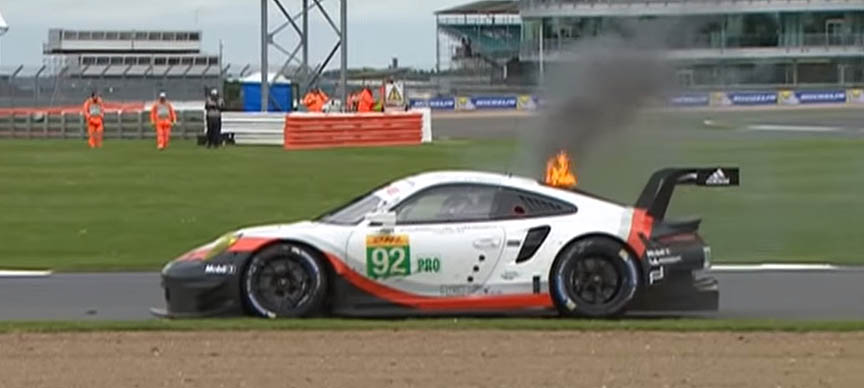
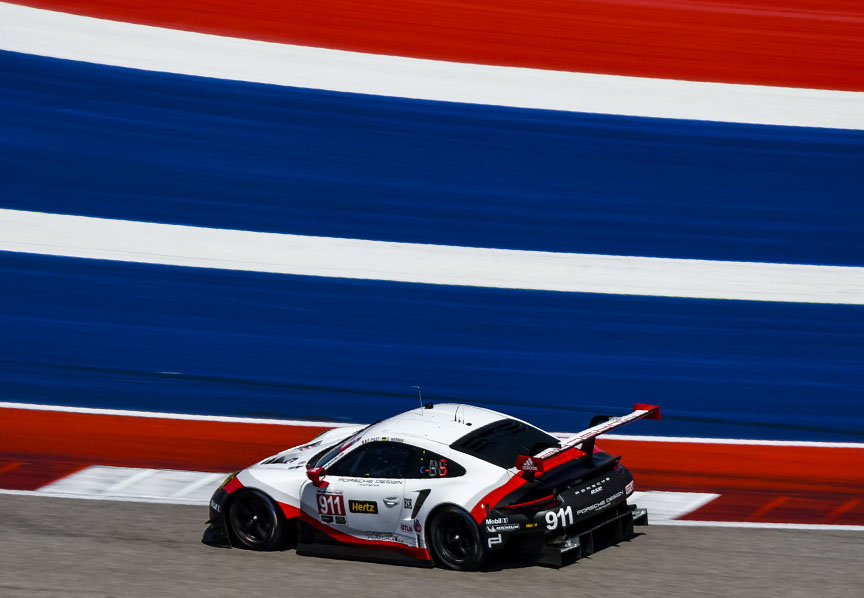
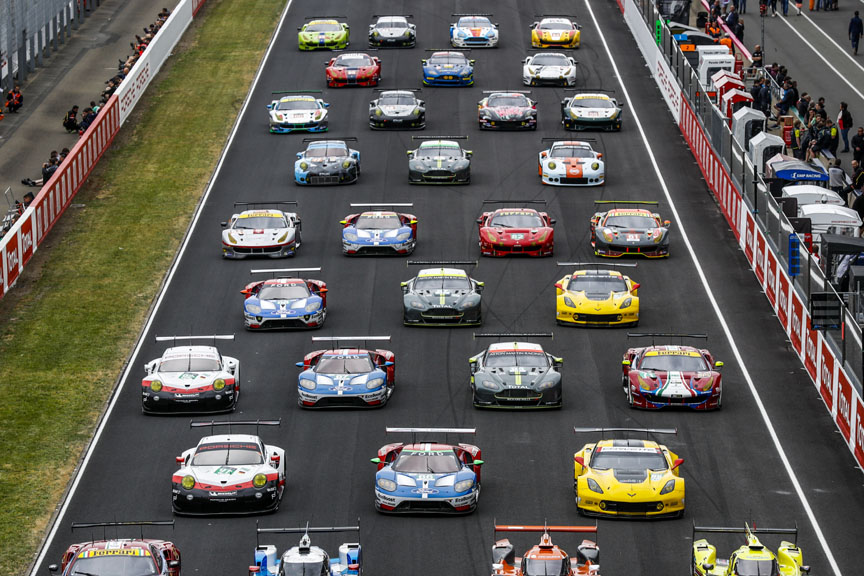
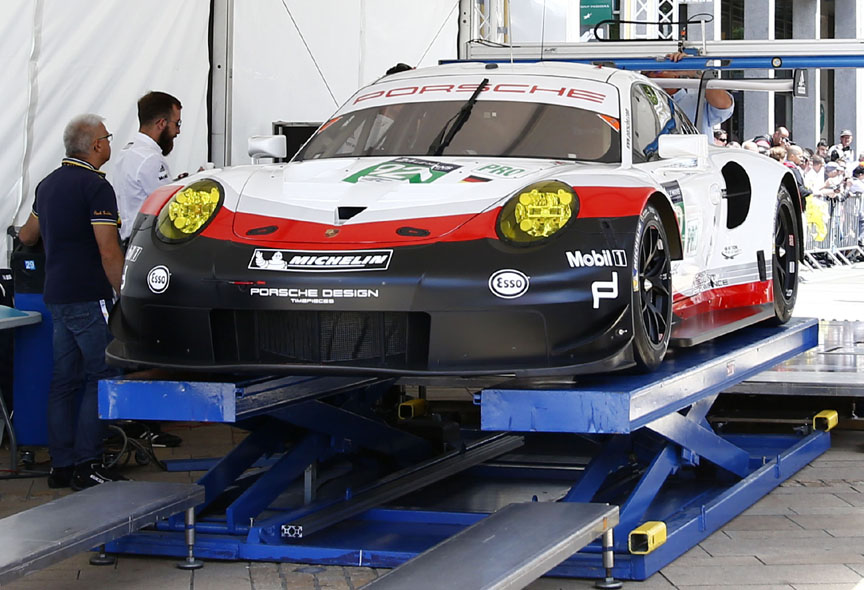
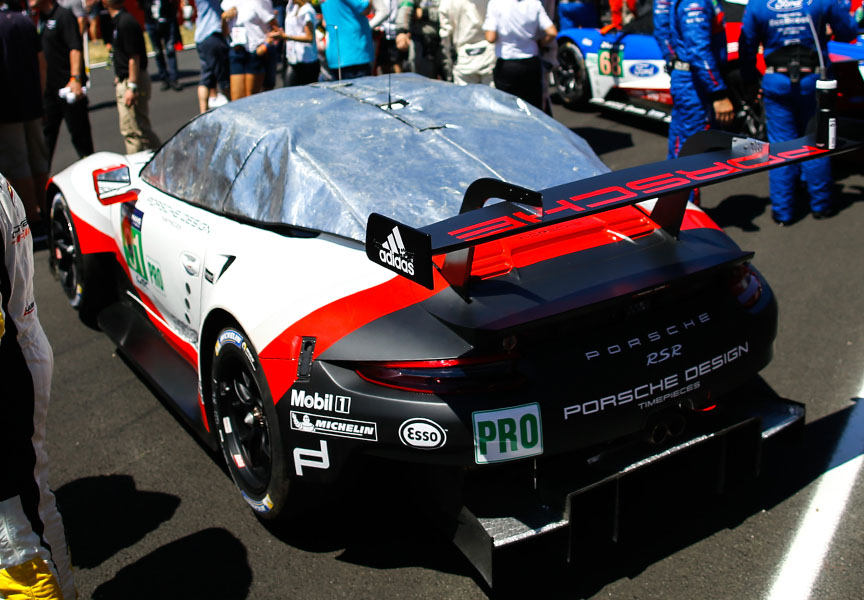
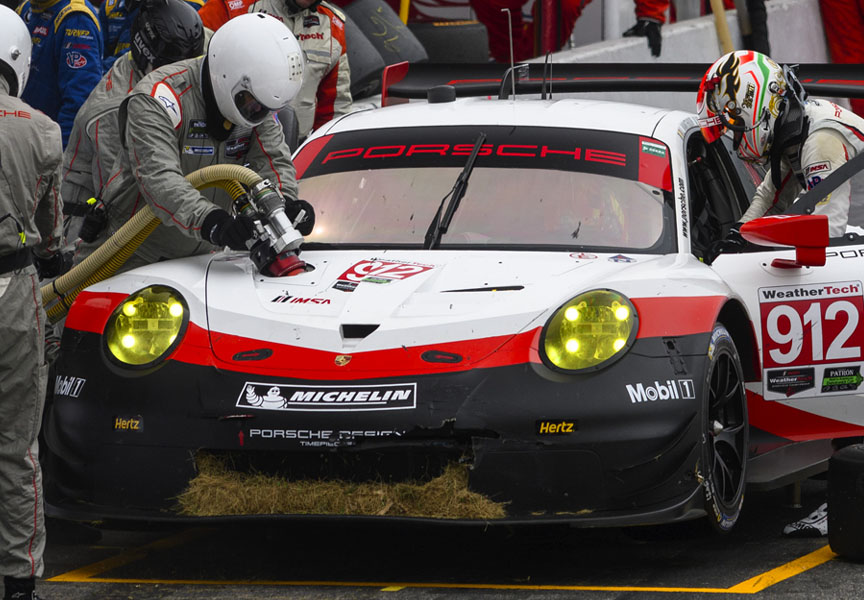
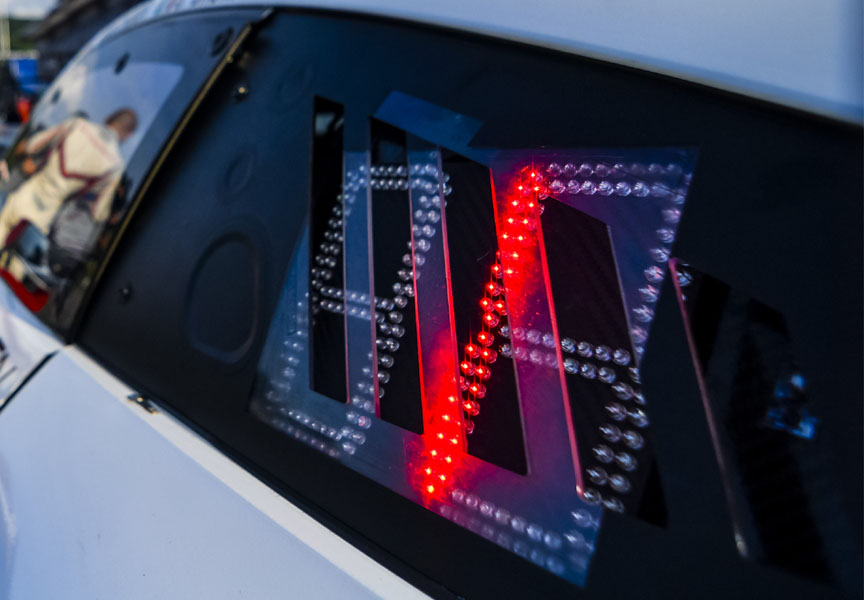
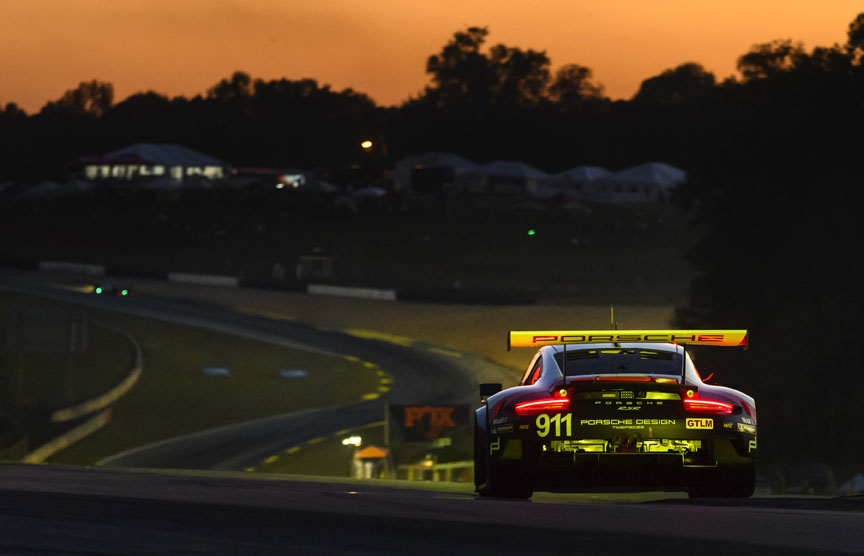
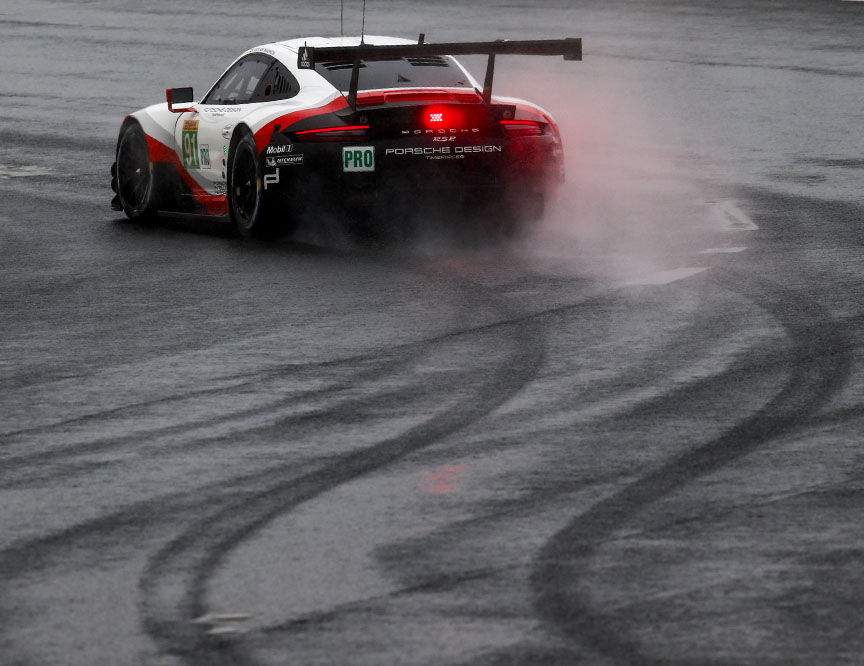
2017 Results
| Date | Championship | Race | Porsche factory team results for 911 991.2 RSR | |||||||
| 2017 Jan 29 | IMSA Championship + NA Endur’ Cup | Daytona 24 hours | 2nd | 6th | ||||||
| 2017 Mar 18 | IMSA Championship + NA Endur’ Cup | Sebring 12 hours | 3rd | 8th | ||||||
| 2017 Apr 08 | IMSA Championship | Long Beach 100 minutes | 3rd | 6th | ||||||
| 2017 Apr 16 | FIA World Endurance Championship | Silverstone 6 hours | 3rd | DNF | ||||||
| 2017 May 06 | IMSA Sportscar Championship | Austin 160 minutes | 4th | DNF | ||||||
| 2017 May 06 | FIA World Endurance Championship | Spa 6 hours | 5th | 6th | ||||||
| 2017 Jun 17 | FIA World Endurance Championship | Le Mans 24 hours | 4th | DNF | ||||||
| 2017 Jul 02 | IMSA Championship + NA Endur’ Cup | Watkins Glen 6 hours | 6th | 7th | ||||||
| 2017 Jul 09 | IMSA Sportscar Championship | Bowmanville 160 minutes | 6th | 7th | ||||||
| 2017 Jul 16 | FIA World Endurance Championship | Nürburgring 6 hours | 2nd | 3rd | ||||||
| 2017 Jul 22 | IMSA Sportscar Championship | Lime Rock 160 minutes | 2nd | 4th | ||||||
| 2017 Aug 06 | IMSA Sportscar Championship | Road America 160 minutes | 2nd | DNF | ||||||
| 2017 Aug 27 | IMSA Sportscar Championship | Virginia 160 minutes | 7th | 8th | ||||||
| 2017 Sep 03 | FIA World Endurance Championship | Mexico City 6 hours | 3rd | 5th | ||||||
| 2017 Sep 16 | FIA World Endurance Championship | COTA 6 hours | 2nd | 6th | ||||||
| 2017 Sep 24 | IMSA Sportscar Championship | Laguna Seca 160 minutes | 3rd | 7th | ||||||
| 2017 Oct 07 | IMSA Championship + NA Endur’ Cup | Atlanta Petit Le Mans | 5th | 6th | ||||||
| 2017 Oct 15 | FIA World Endurance Championship | Fuji 6 hours | 2nd | 3rd | ||||||
| 2017 Nov 5 | FIA World Endurance Championship | Shanghai 6 hours | 2nd | DNF | ||||||
| 2017 Nov 18 | FIA World Endurance Championship | Bahrain 6 hours | 4th | DNF | ||||||
Although without race victories, Porsche won the 2017 IMSA North American Endurance Cup GT LM class in Drivers and in Teams categories (Ford won in Manufacturers category). At the NAEC the points are awarded many times in one race – after each of 3, 4 or 6 hours depending on the length of the race.
In the 2017 FIA WEC GT Driver’s Championship Porsche drivers Richard Lietz/Frédéric Makowiecki scored second. In the GT Manufacturer’s Championship Porsche scored third after Ferrari, Ford and in front of Aston Martin.
2018/2019 FIA WEC Super Season
FIA is in the process of moving its World Endurance Championship schedule for the seasons to start in the end of the year and to end next summer (the same has been practiced with Formula E from the beginning). To transform from the previous arrangement to the new, there has to be either a very short season or a longer-than-usual season. Instead of the usual 7 month season, the 2018/2019 “super season” will be 11 months long, but will not have more races. Actually there will be 8 races in the 2018/2019 season, while there were 9 races in the 2017 season, but the actual racing time is longer as the super season includes 2 Le Mans 24 hour races!
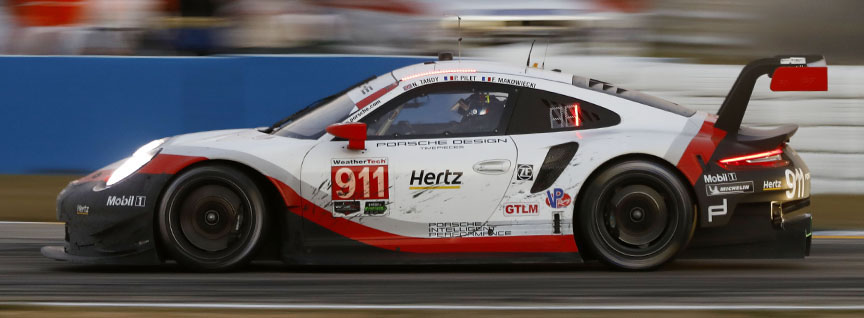
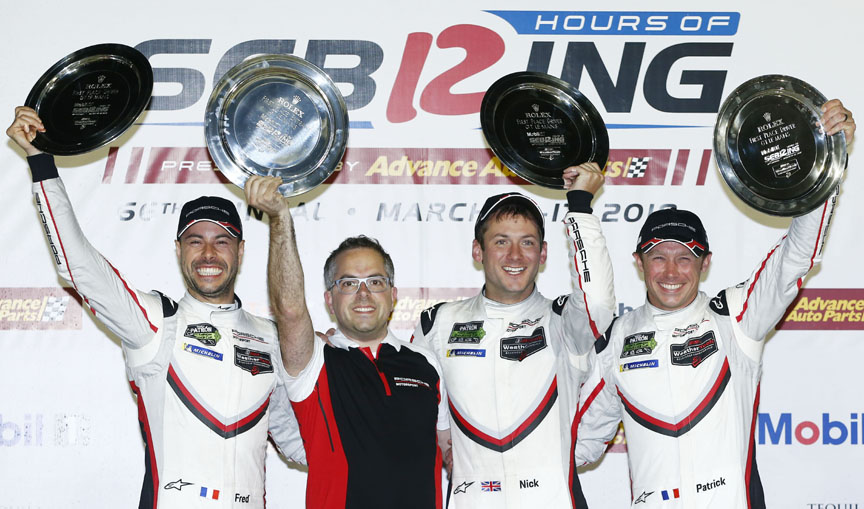
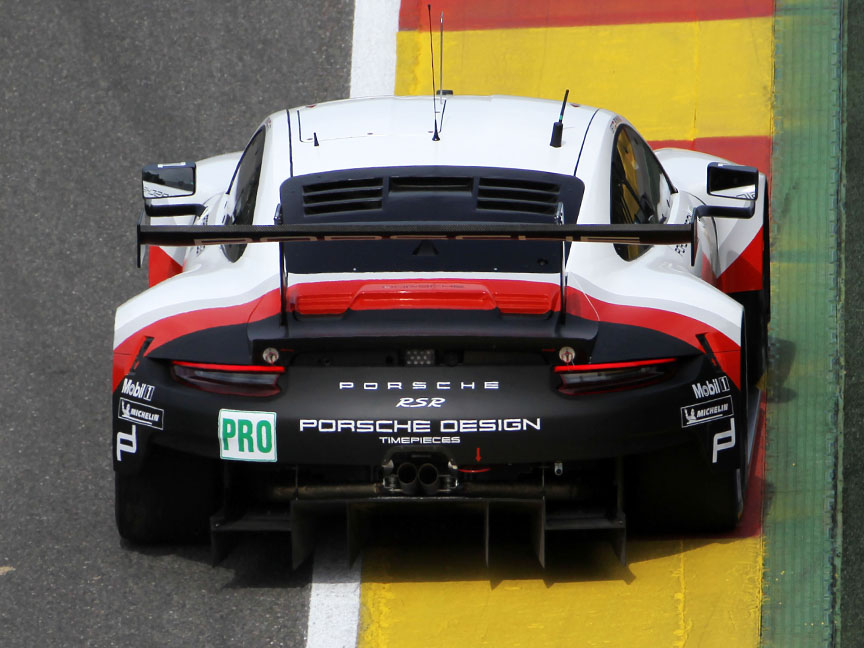
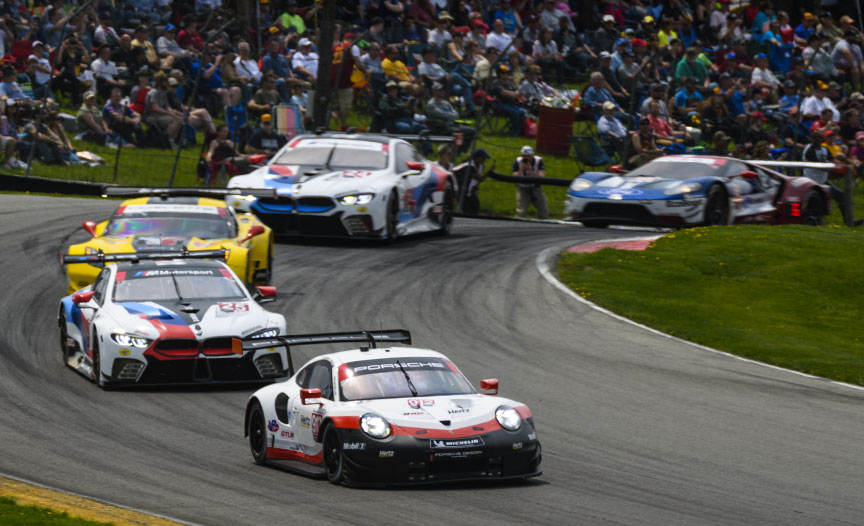
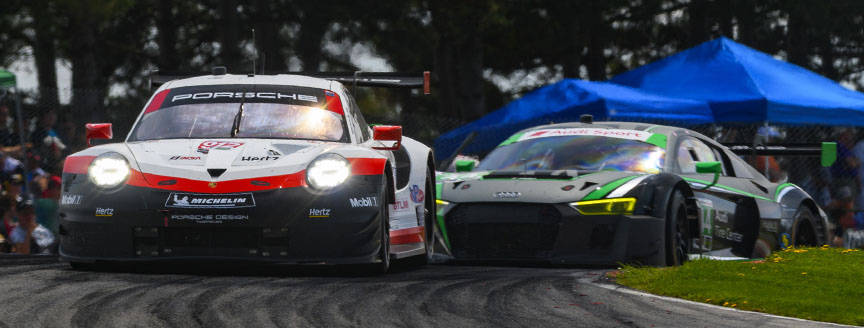
2018 Le Mans 24h
After withdrawal from LMP1 top class racing, Porsche factory team entered the 2018 Le Mans 24 hour race with 4 mid-engined 911 RSR – two cars that compete in the FIA WEC series and two IMSA Championship factory team cars:
- 911 RSR #91 (with “Pink pig” livery): Gianmaria Bruni, Richard Lietz, Frédéric Makowiecki
- 911 RSR #92 (with “Rothmans” livery): Kévin Estre, Michael Christensen, Laurens Vanthoor
- 911 RSR #93 (with Porsche Motorsport livery). Patrick Pilet, Nick Tandy, Earl Bamber
- 911 RSR #94 (with Porsche Motorsport livery): Timo Bernhard, Romain Dumas, Sven Müller
Bamber, Bernhard, Dumas and Tandy are overall Le Mans winners from earlier races, so there’s not exactly anything to win for them. As Porsche factory drivers they cannot drive for other teams entering fast LMP cars, but anyway – Le Mans is Le Mans, an extreme experience always worth repeating, no matter in which car.
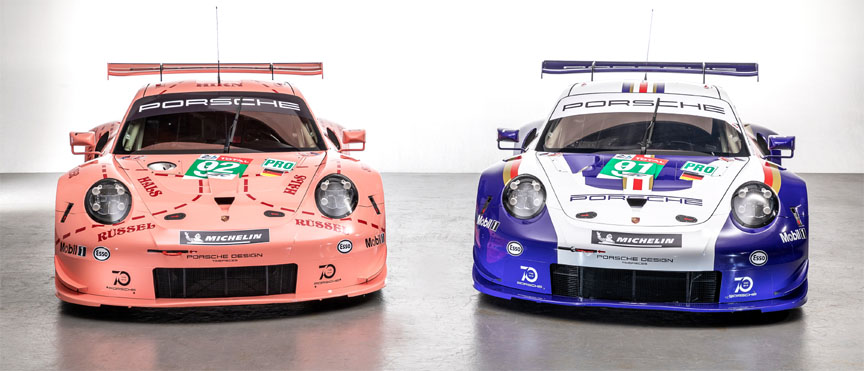
As Porsche wasn’t fighting for the overall victory at the 2018 Le Mans race, they decided to please the fans with historic Porsche Le Mans liveries. The #91 got the livery of the Porsche 917/20 (that didn’t even finish the 1971 Le Mans race, but standed out because of its strange body shape and livery). The #92 car got the “Rothmans” livery known from the Le Mans winning Porsche 956 and Porsche 962.
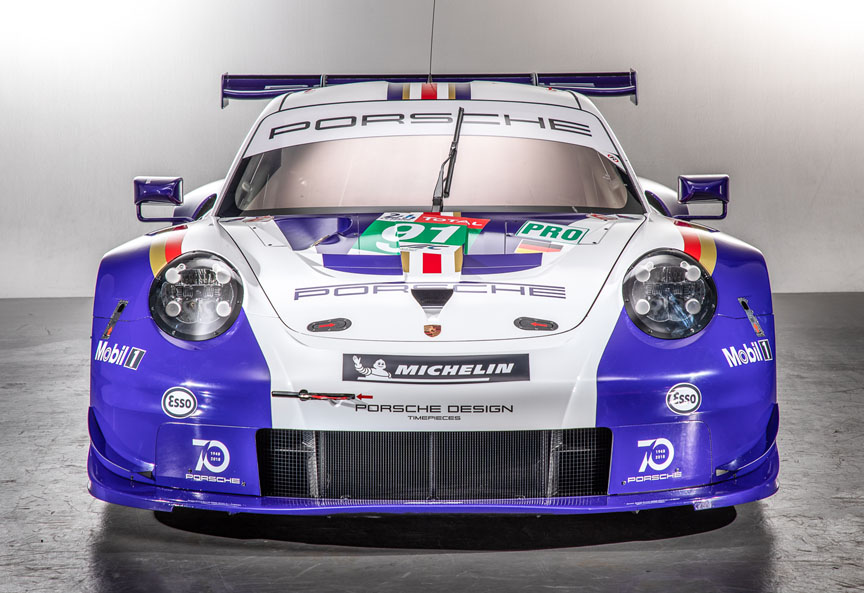
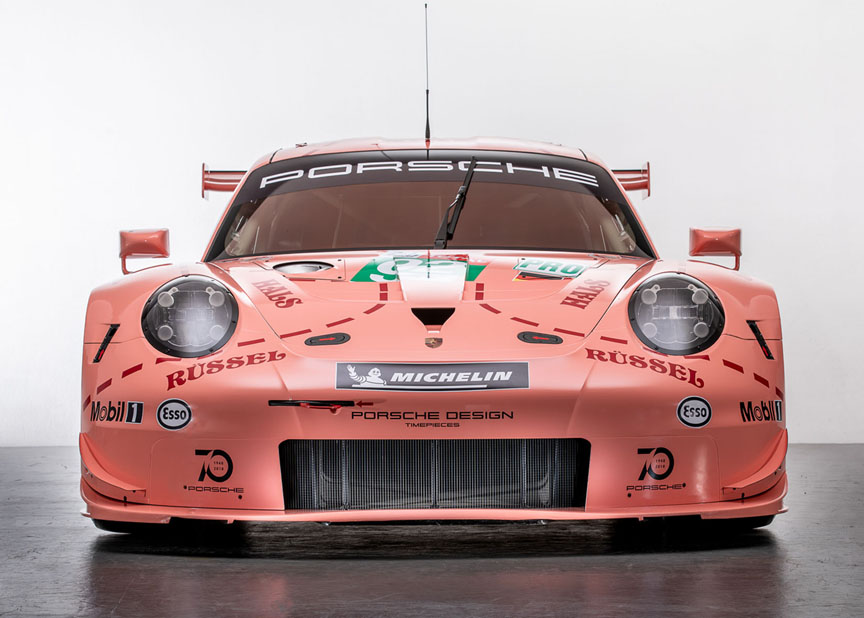
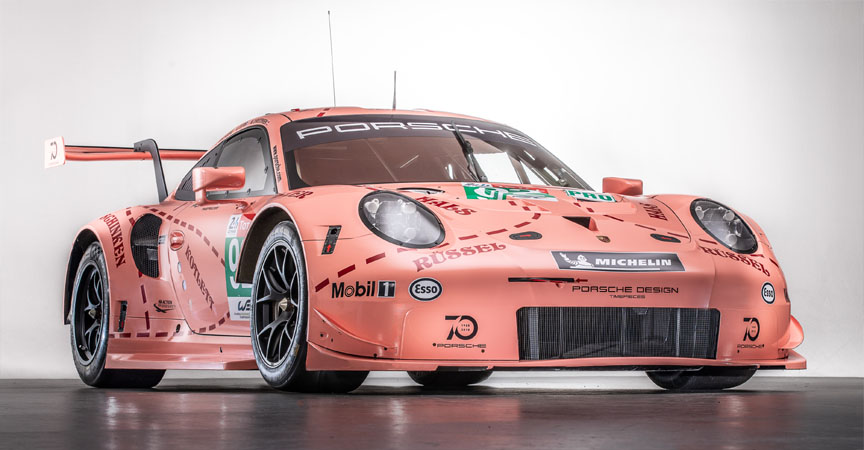
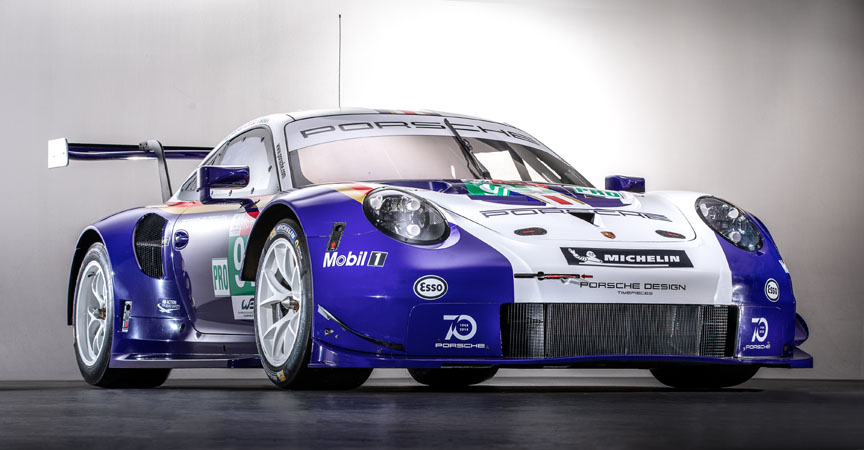
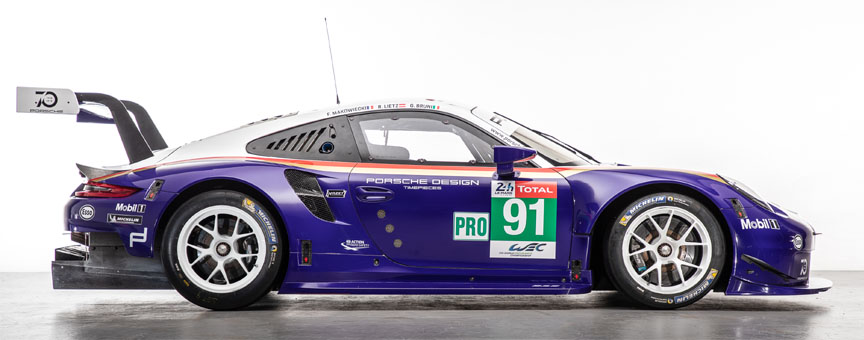
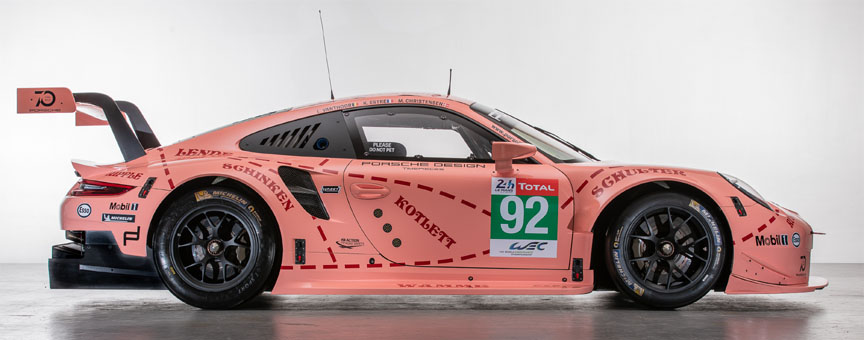
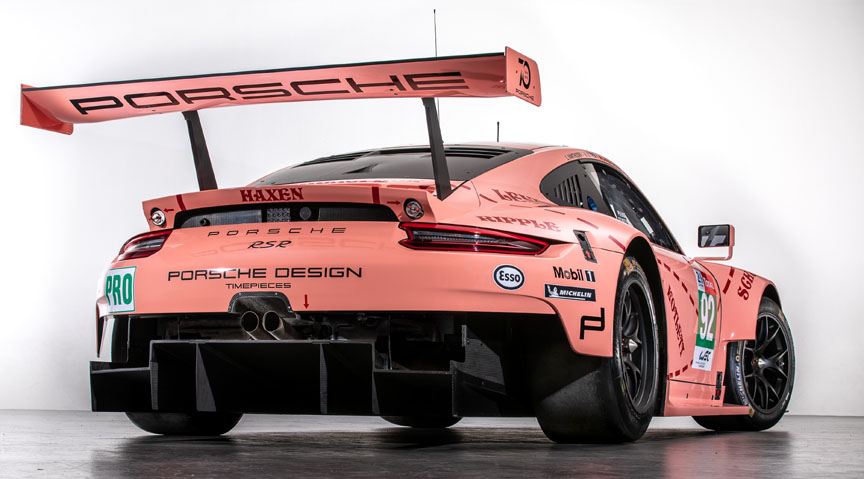
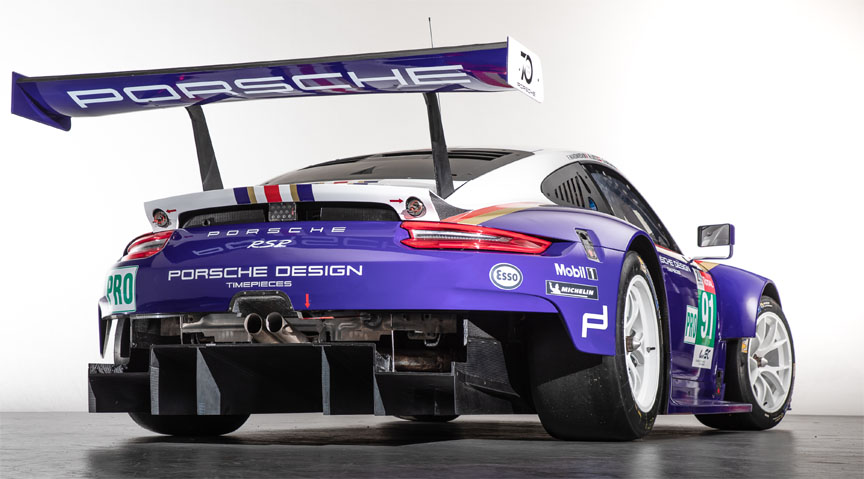
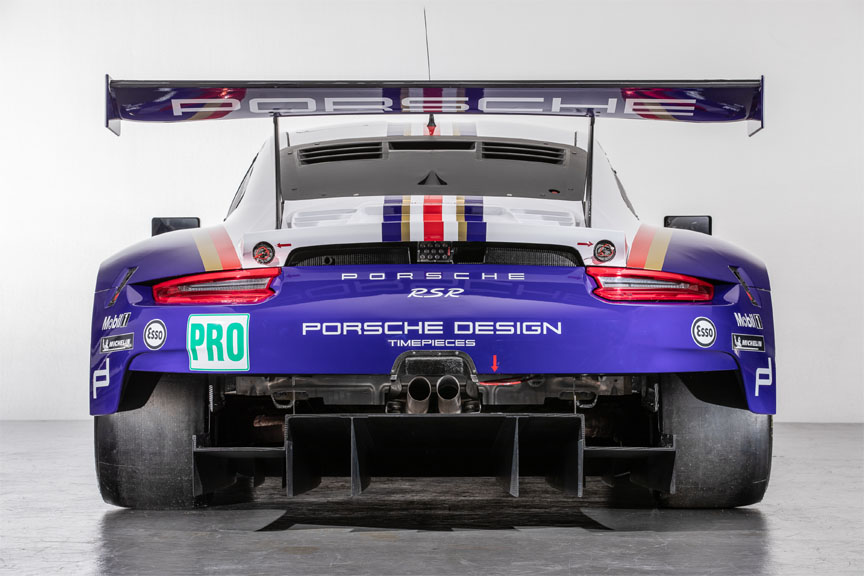
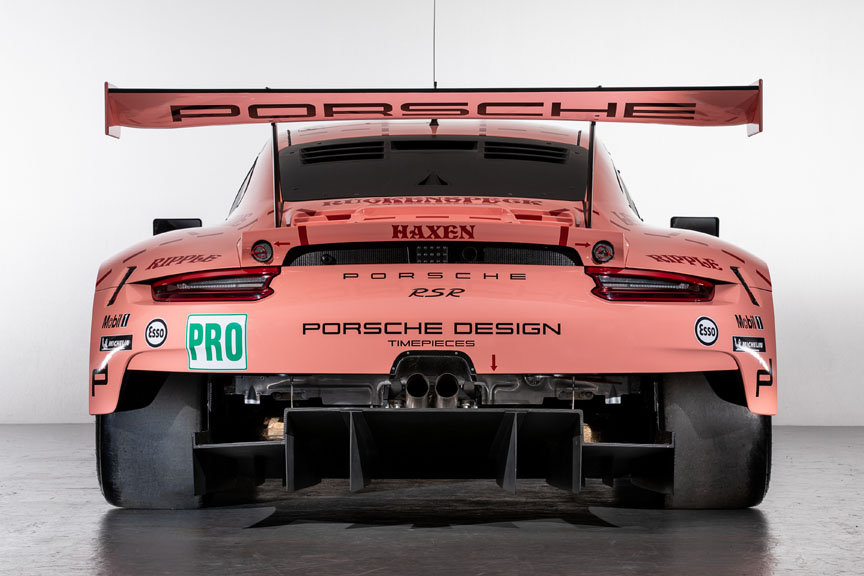
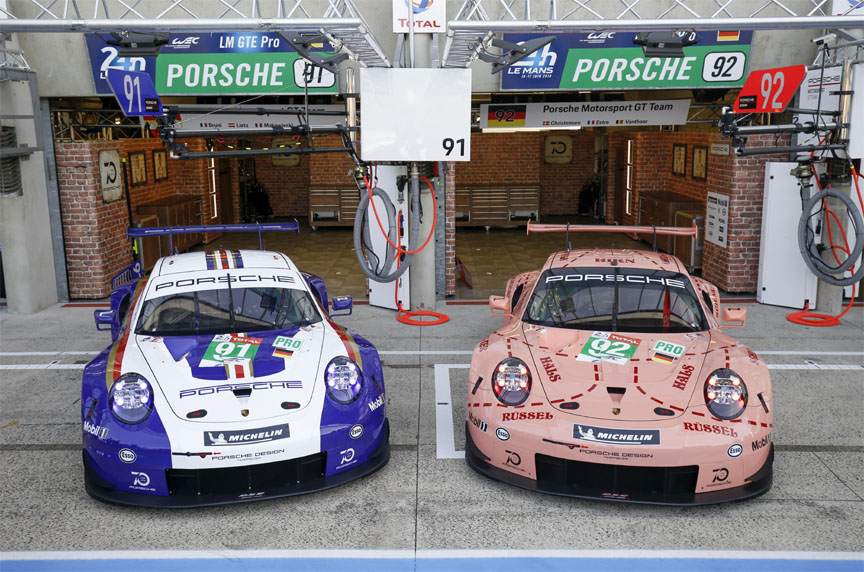
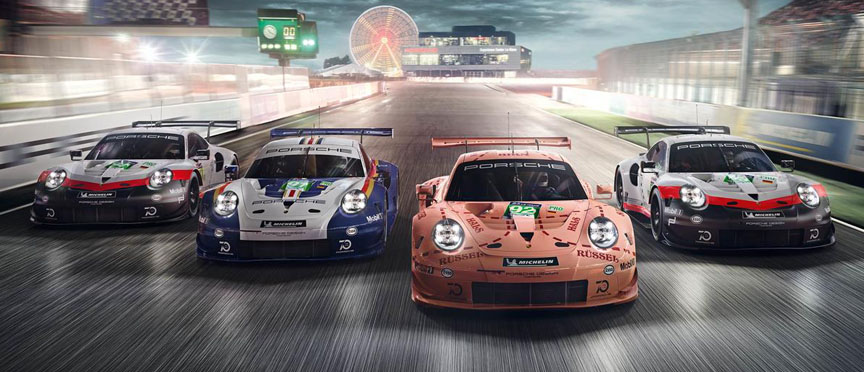
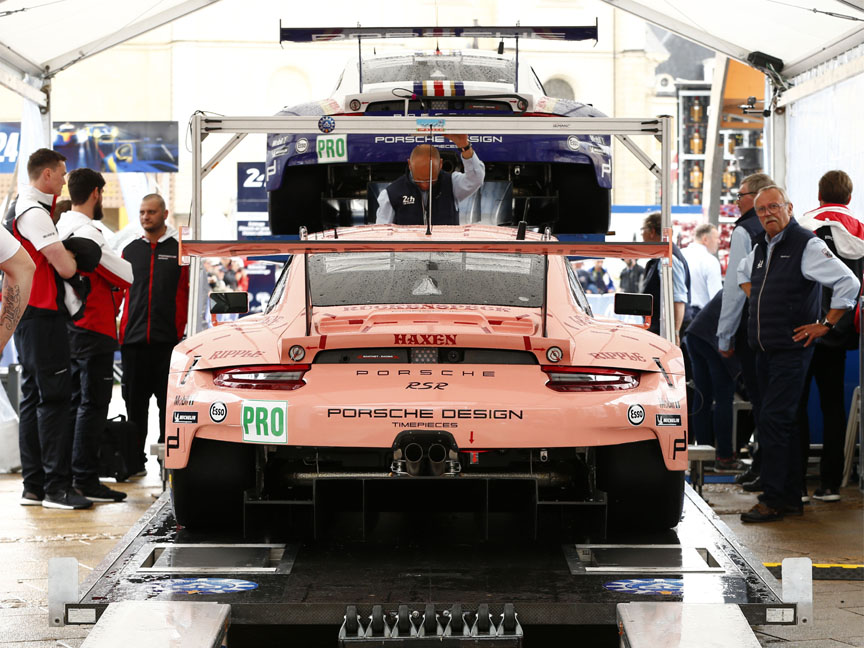
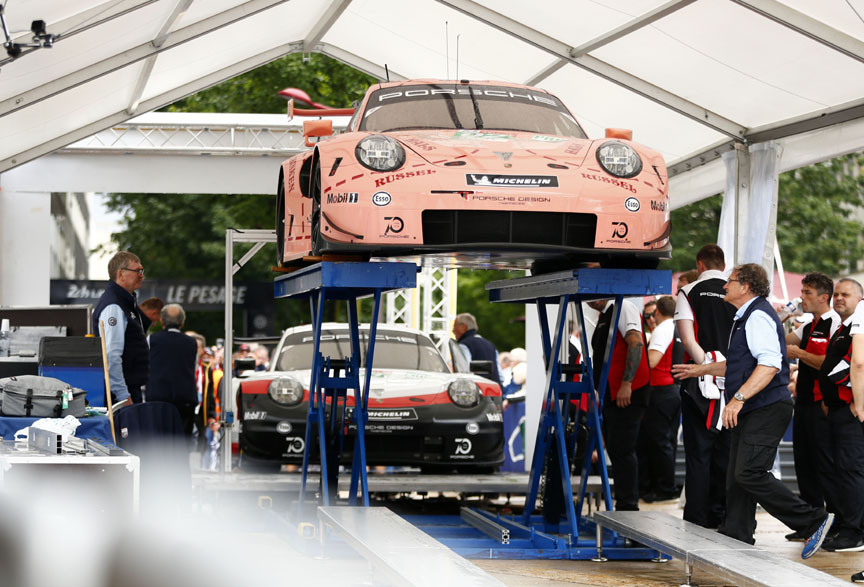
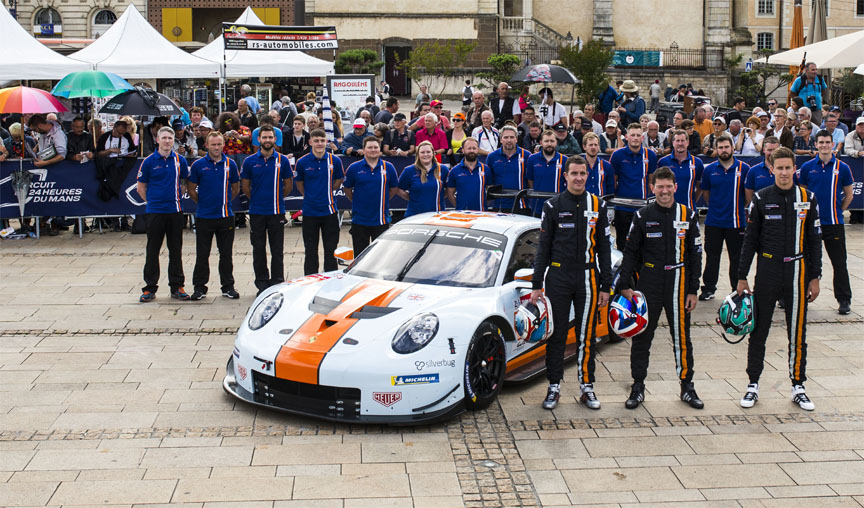
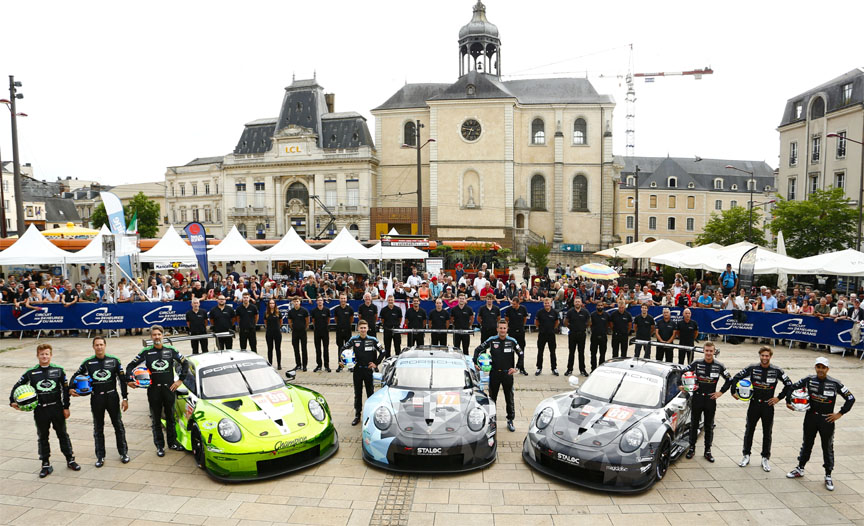
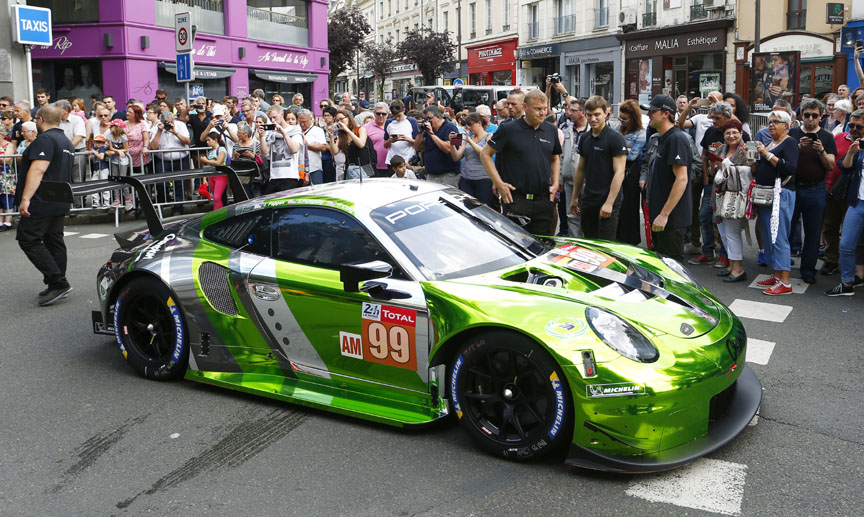
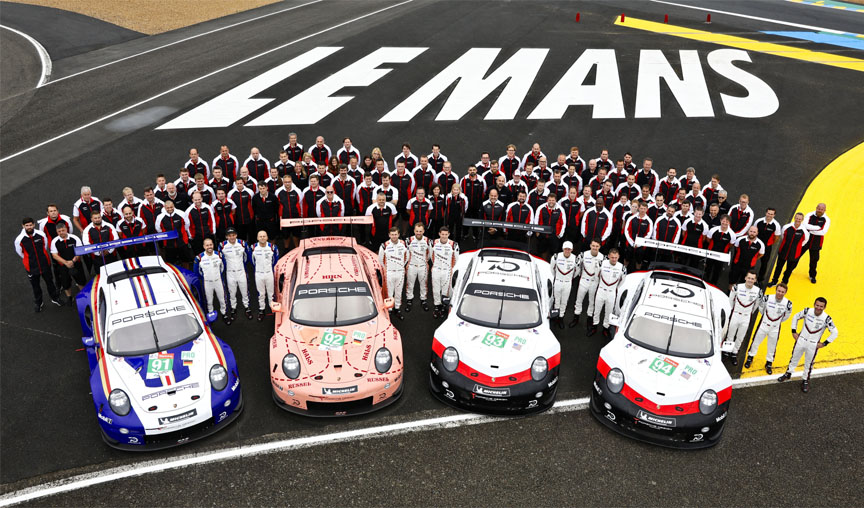
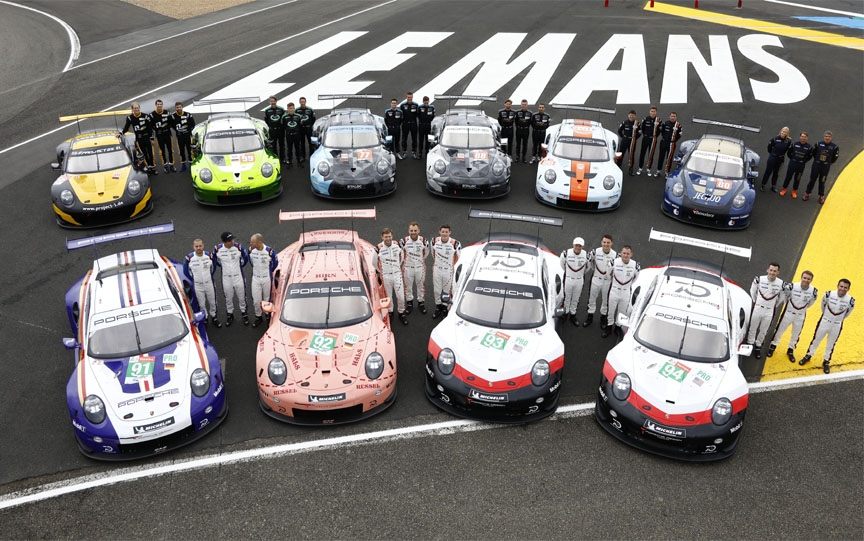
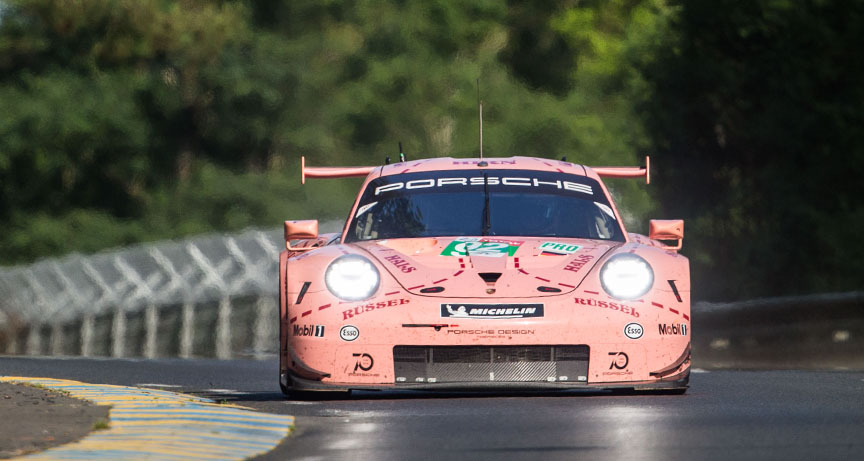
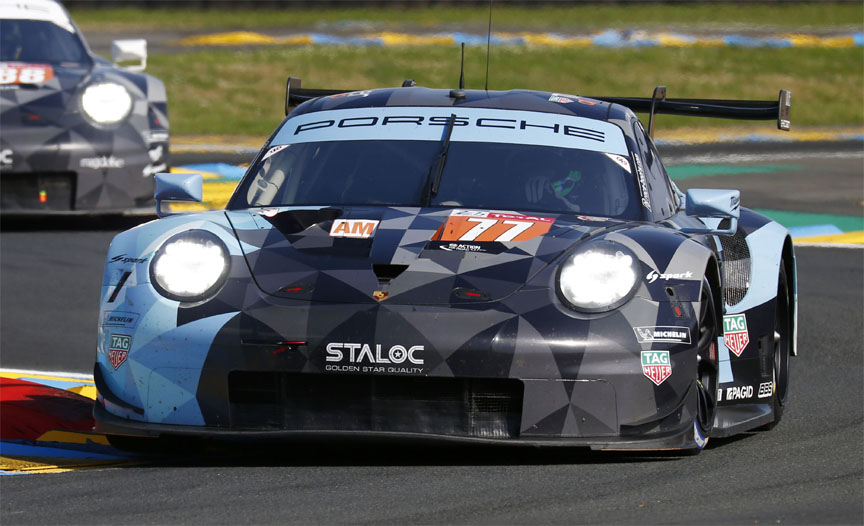
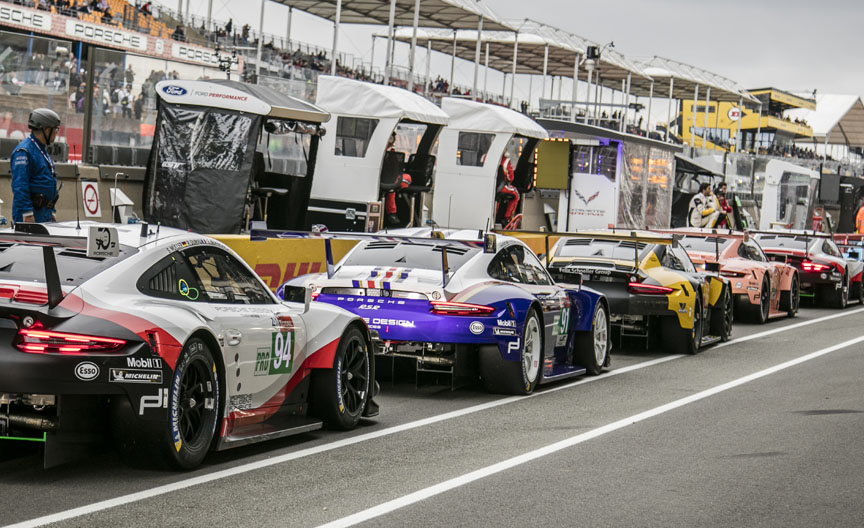
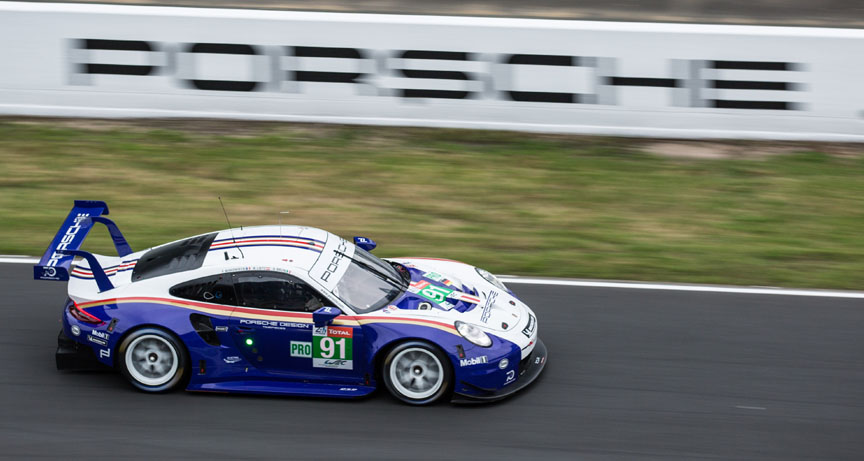
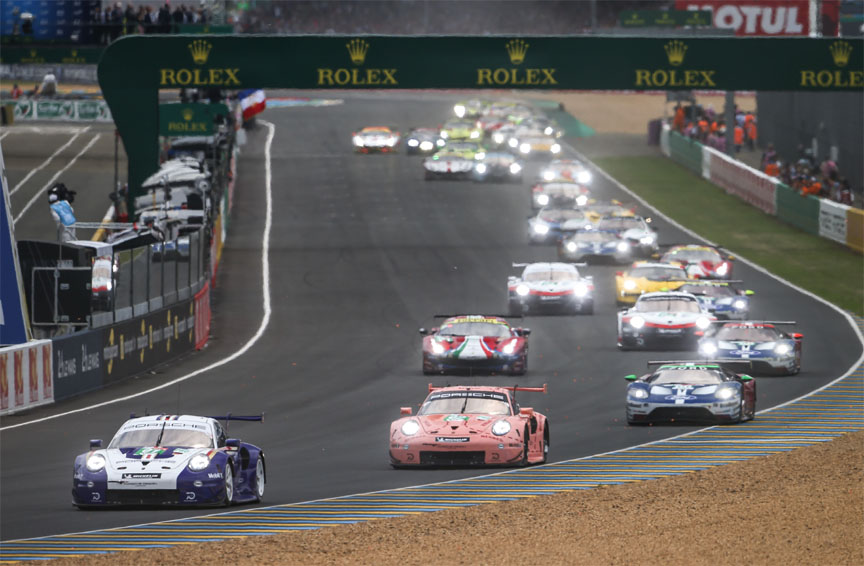
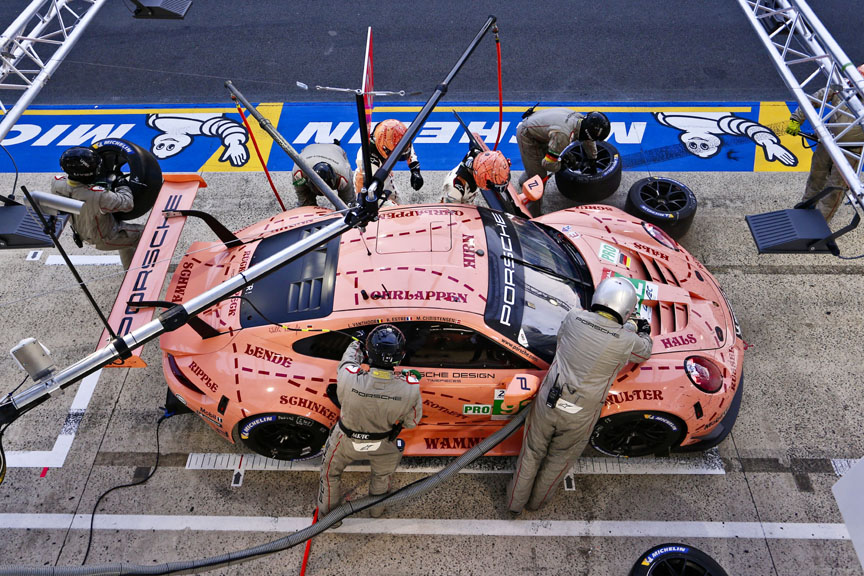
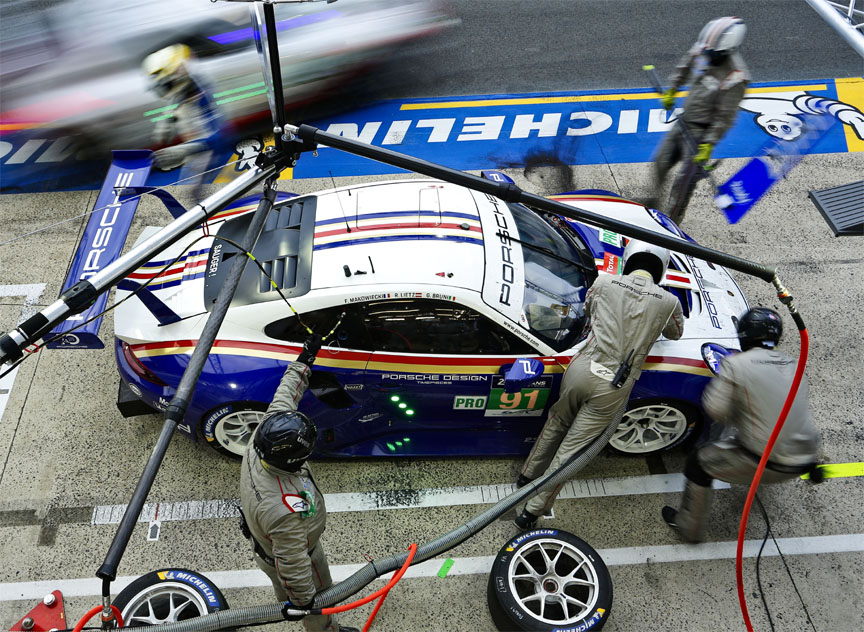
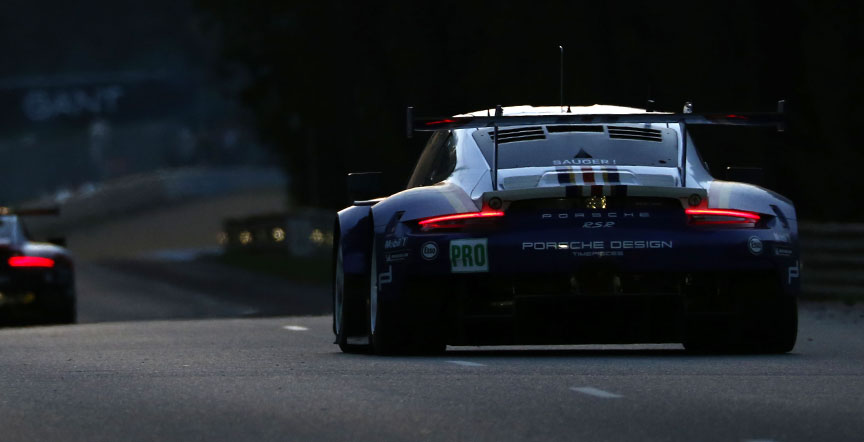
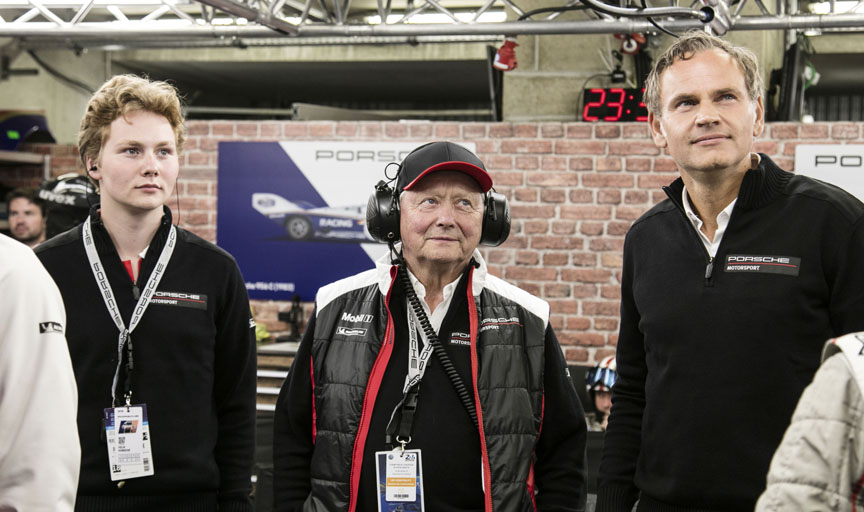
The #94 car of Bernhard/Dumas/Müller had to retire because of the rear suspension damage. It could have been repaired, but Porsche was not searching to finish among the last ones. It had entered so many cars, so it just focused on the performance of the running 911s. The #93 car of Pilet/Bamber/Tandy had to pit for an alternator replacement which robbed 25 minutes and the chances for a good result. Both Porsche Motorsport liveried factory team cars had bad luck and the focus switched even more to the two 911s with historic liveries running up front in the GTE Pro category.
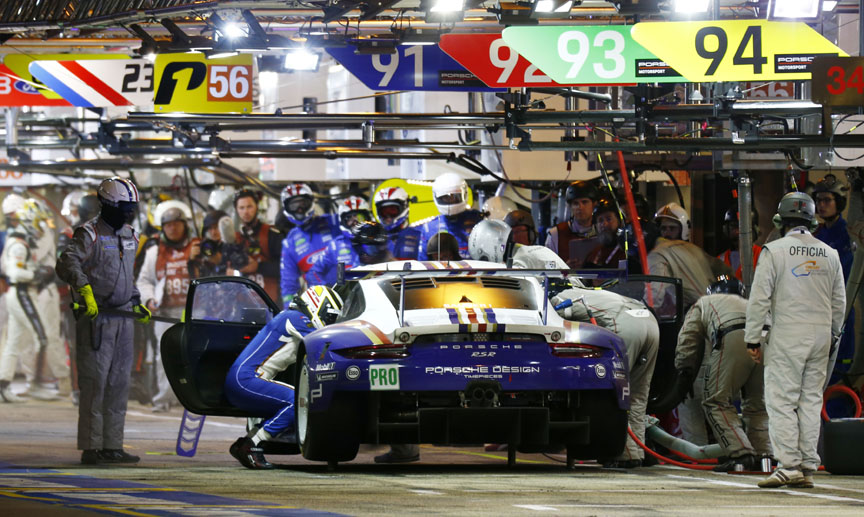
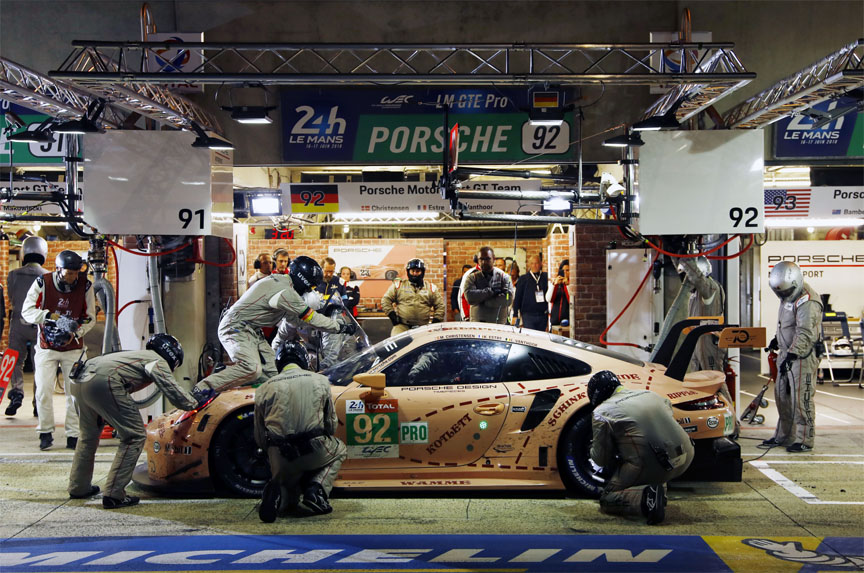
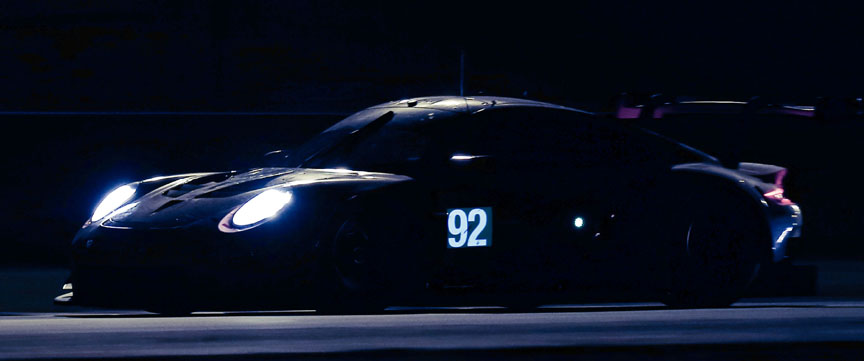
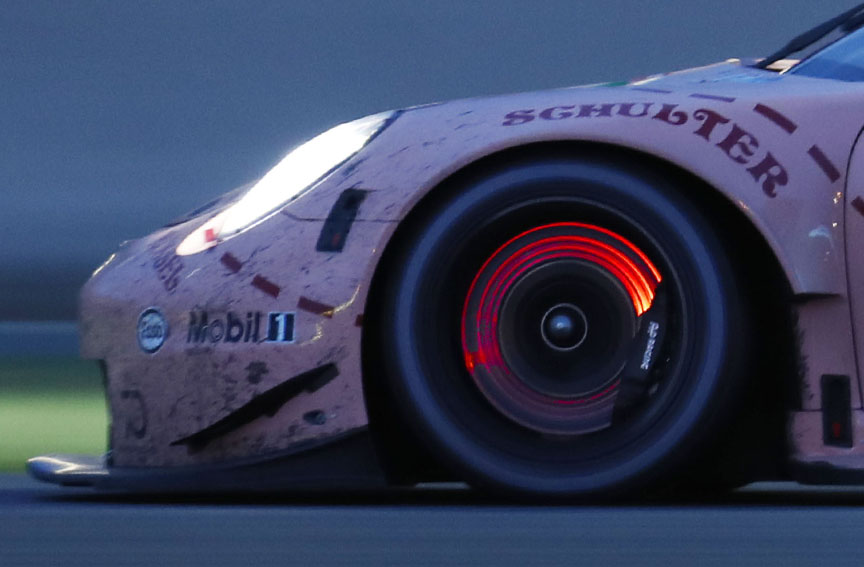
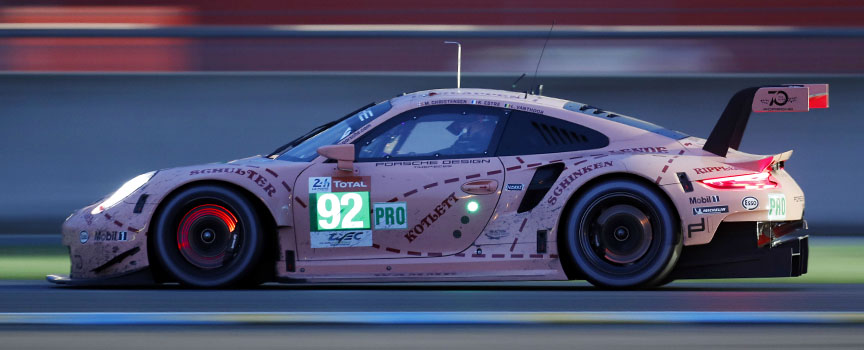
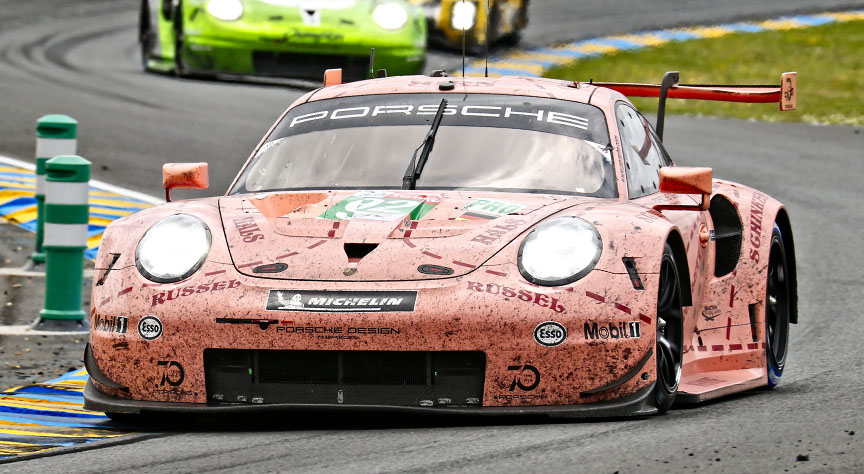
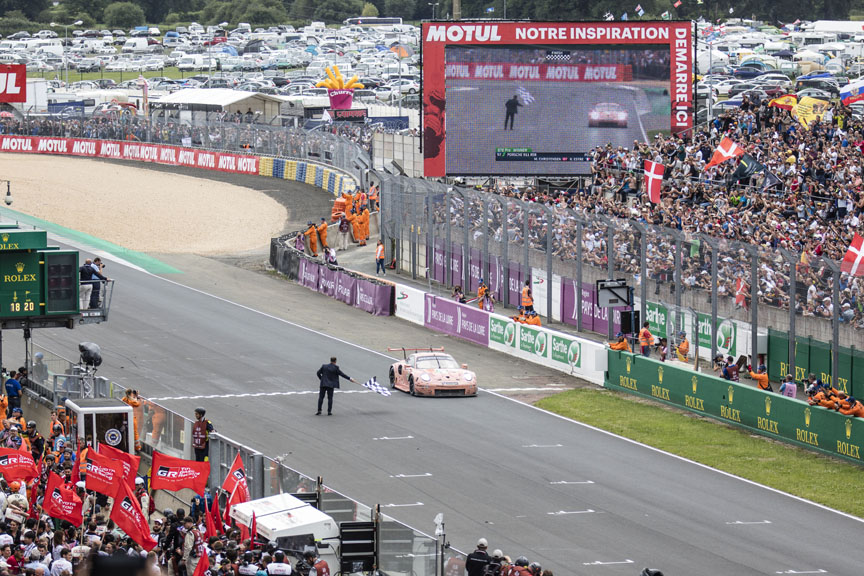
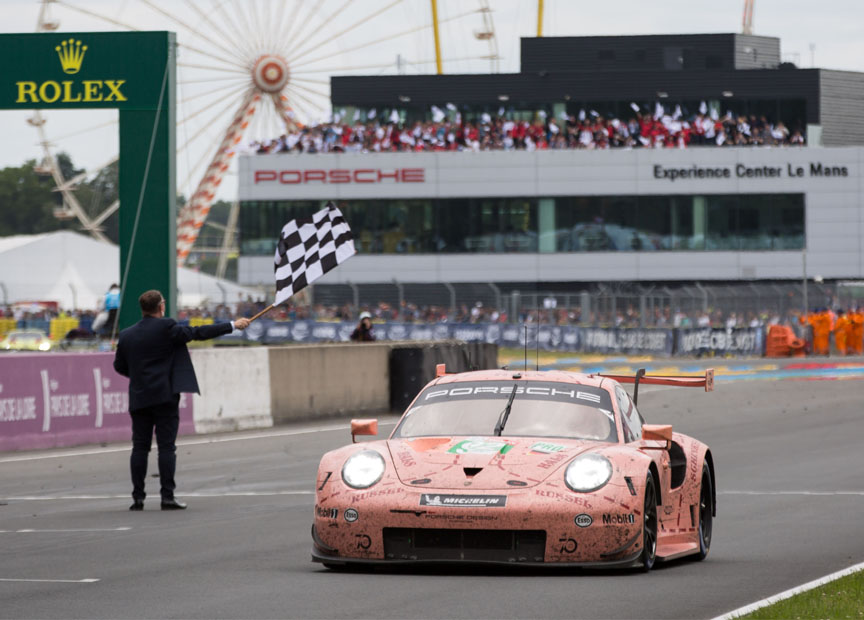
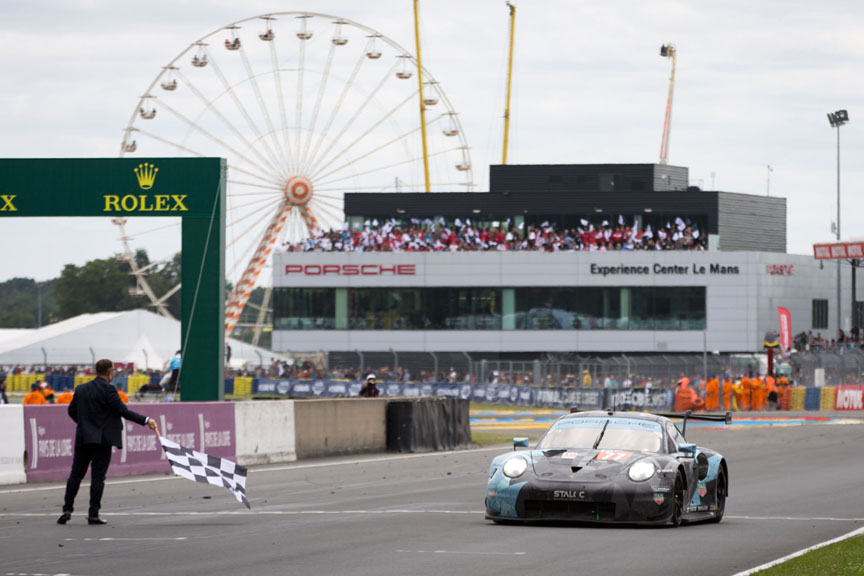
Porsches managed to win both GT classes. Dempsey-Proton Racing 911 RSR #77 driven by Matt Campbell, Christian Ried and Julien Andlauer won the GTE Am class. 18-year-old Andlauer became the youngest class winner in Le Mans history.
The #92 “Pink Pig” won the GTE Pro class, followed by the #91 “Rothmans” in front of Ford GTs, Corvette C7Rs, Ferrari 488 GTE Evos, Aston Martin Vantage AMRs and BMW M8 GTEs. The GTE Pro class was the most interesting and most competitive class at the 2018 Le Mans race as in the top LMP1-Hybrid class only one manufacturer (Toyota) had remained.
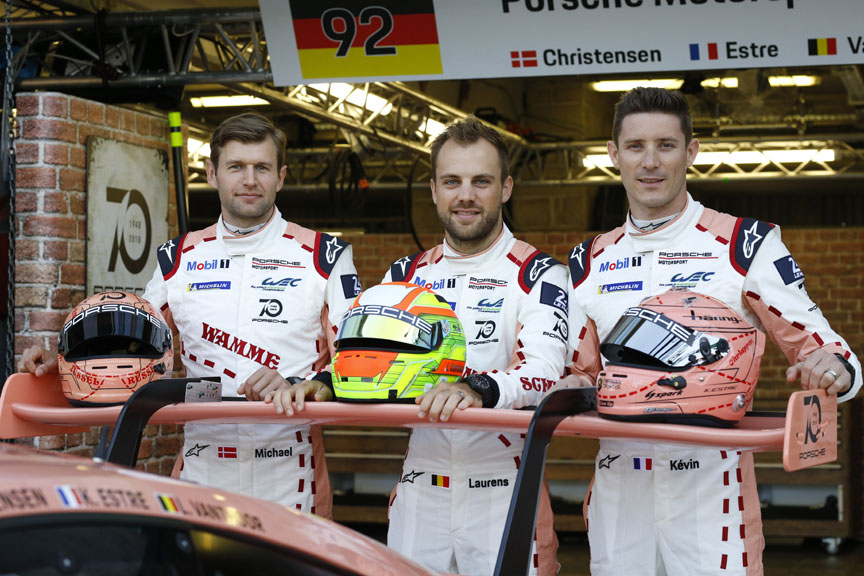
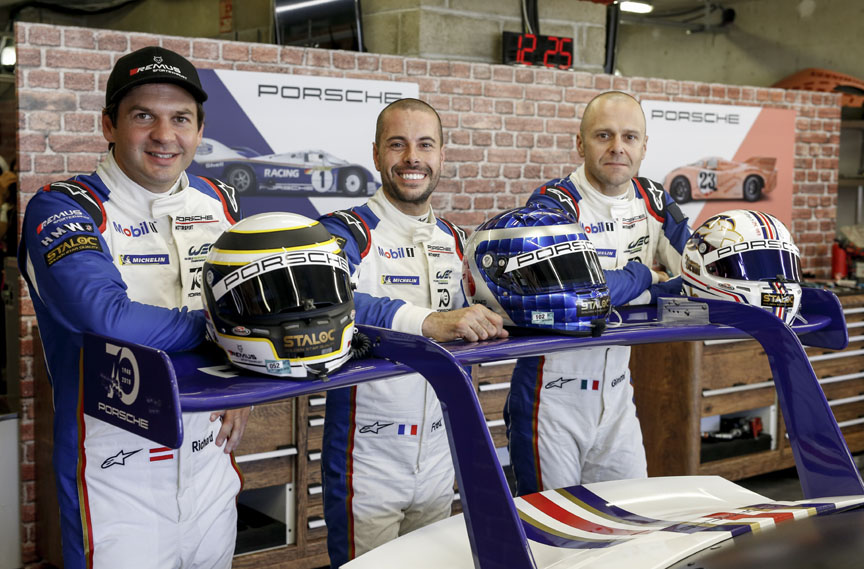
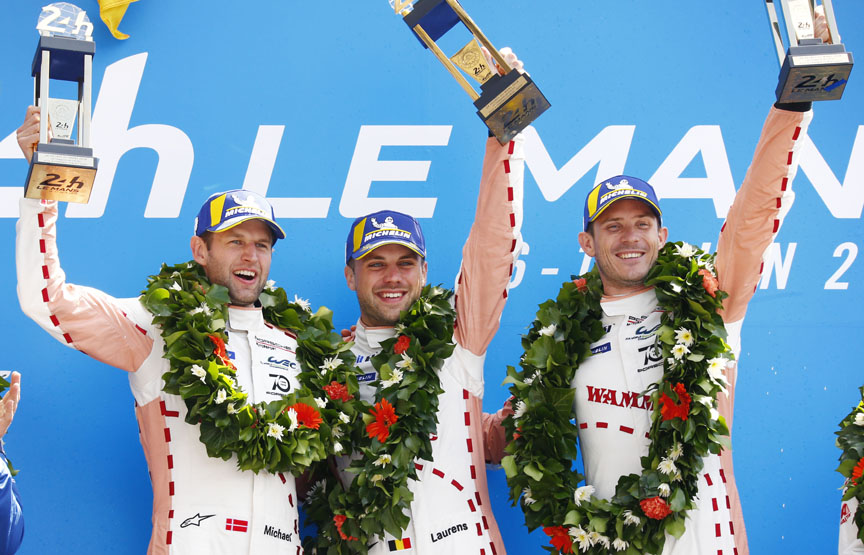
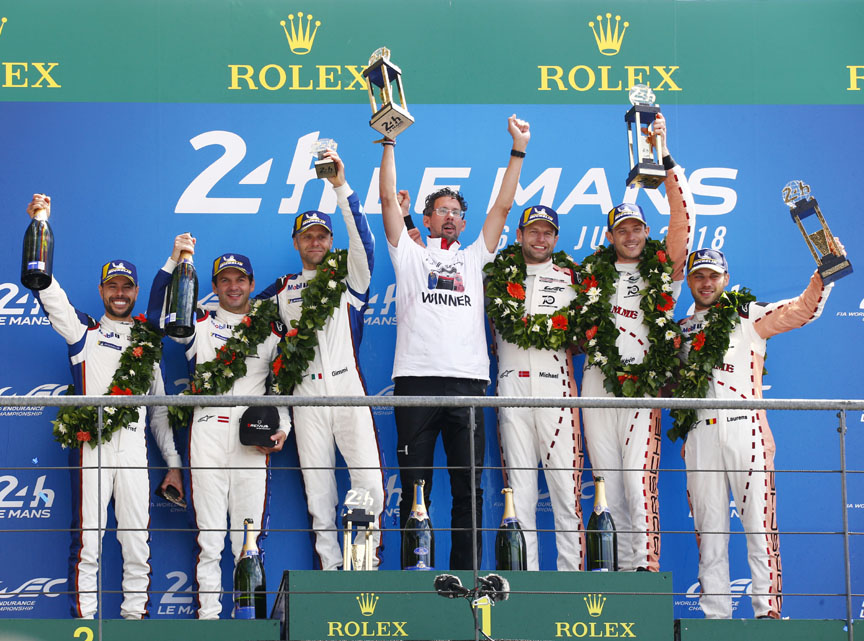
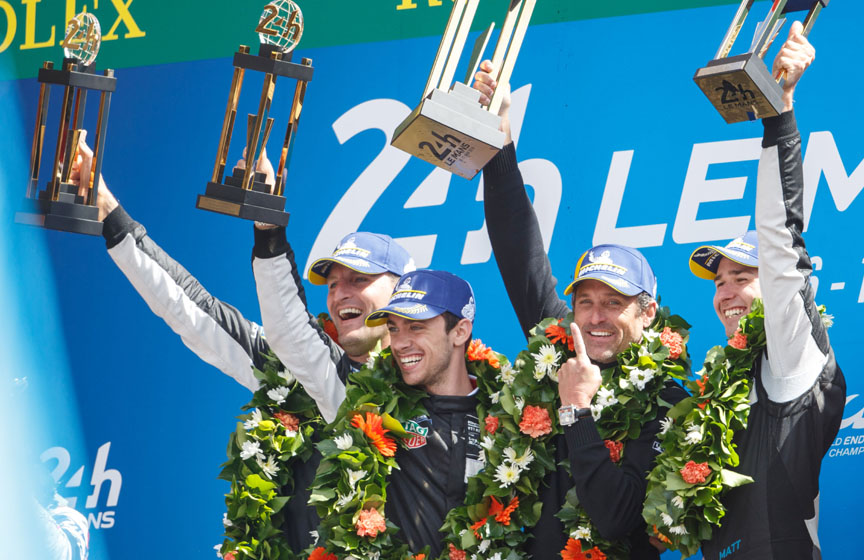
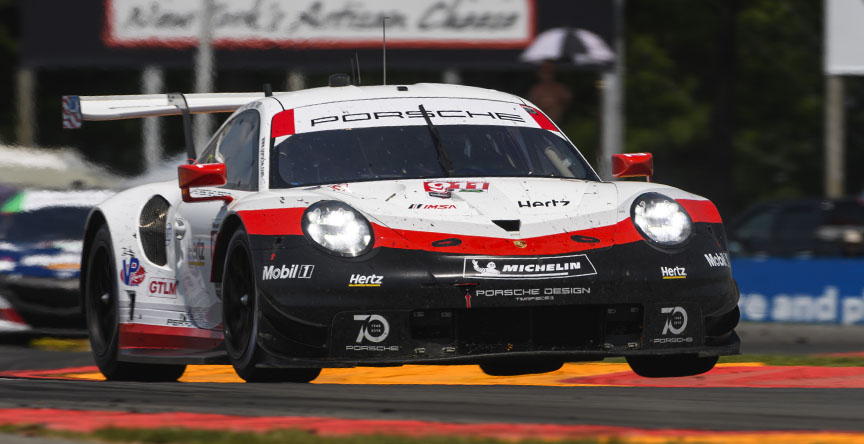
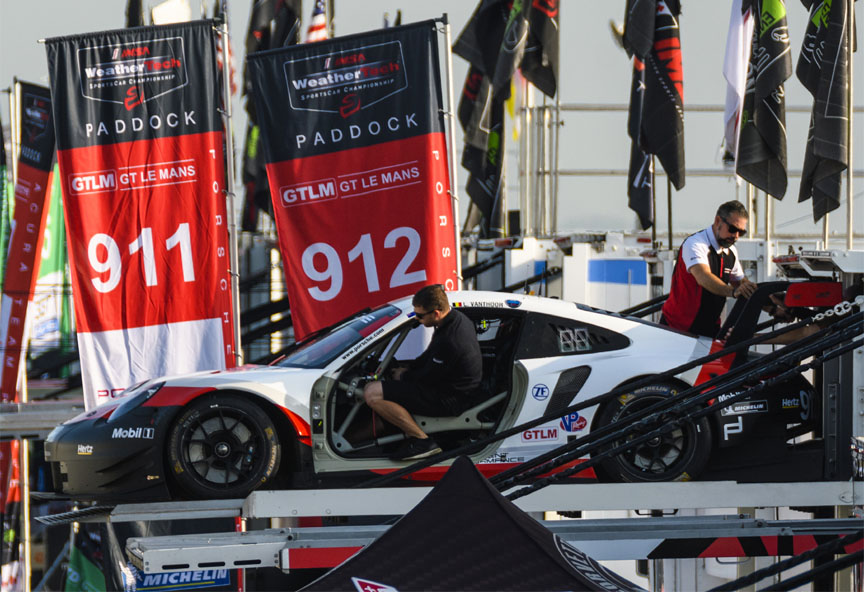
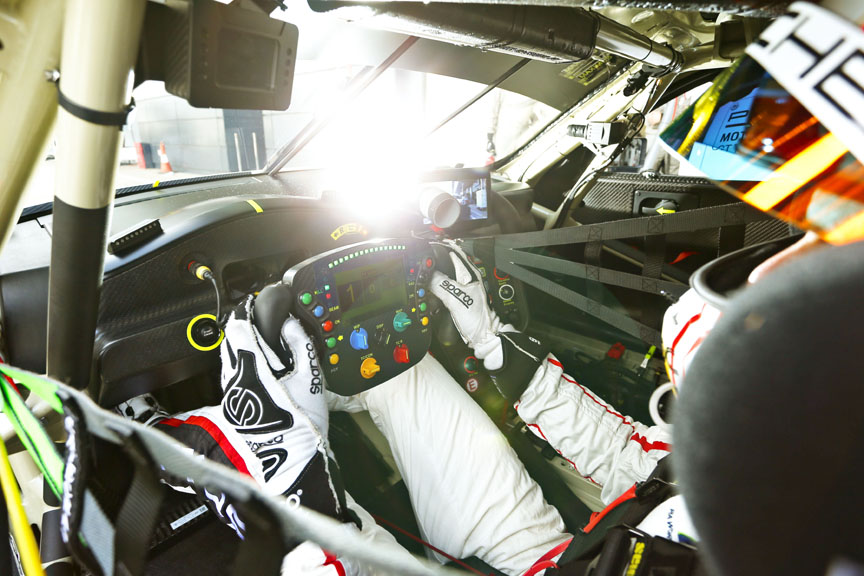
2018 Petit Le Mans class victory with 1998 livery
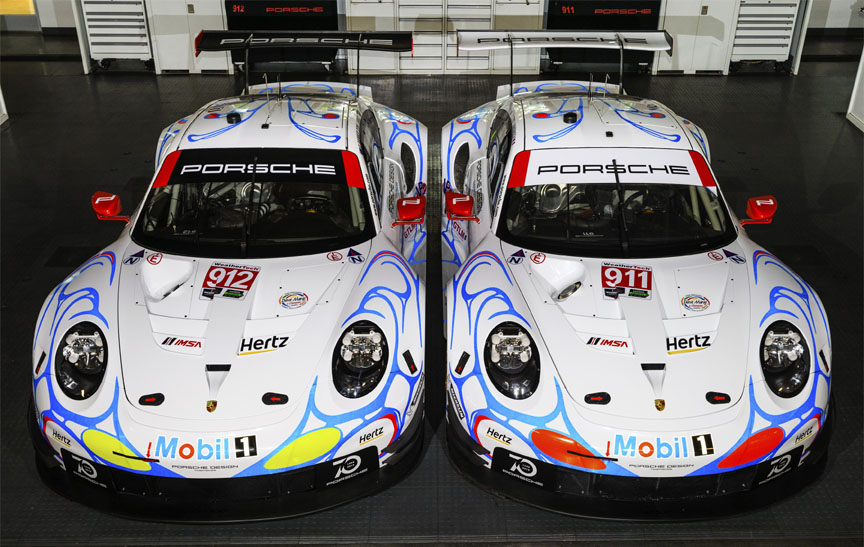
The livery seen here, was used on the 1998 Le Mans winning Porsche 911 GT1 aswell as in the 1998 Petit Le Mans race on Road Atlanta, where one of the cars got airborne because of the flaw in aerodynamics design. Like the 991.2 RSR, the 996 GT1 was mid-engined. Just that the 911 GT1 was actually a prototype that raced in the GT category, while the 991.2 RSR is closer to Porsche street cars. At least shape-wise.
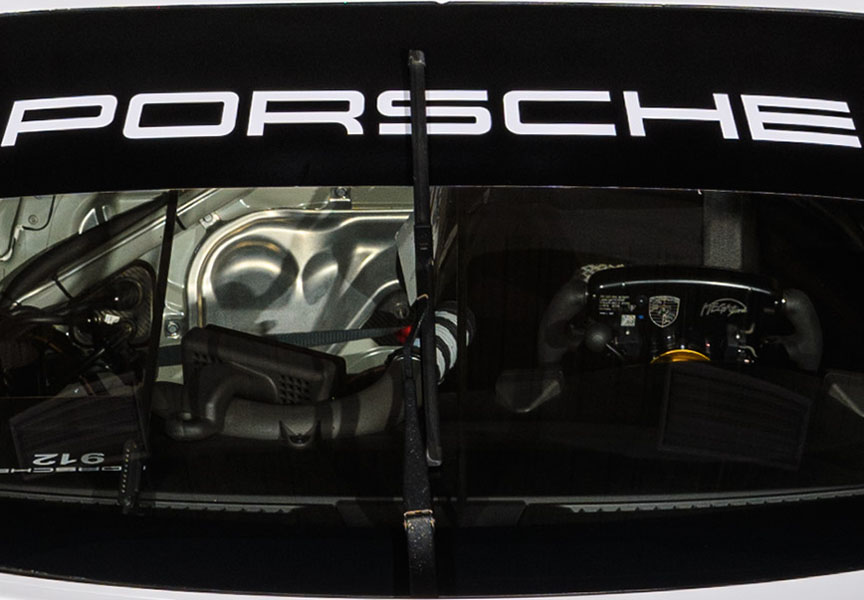

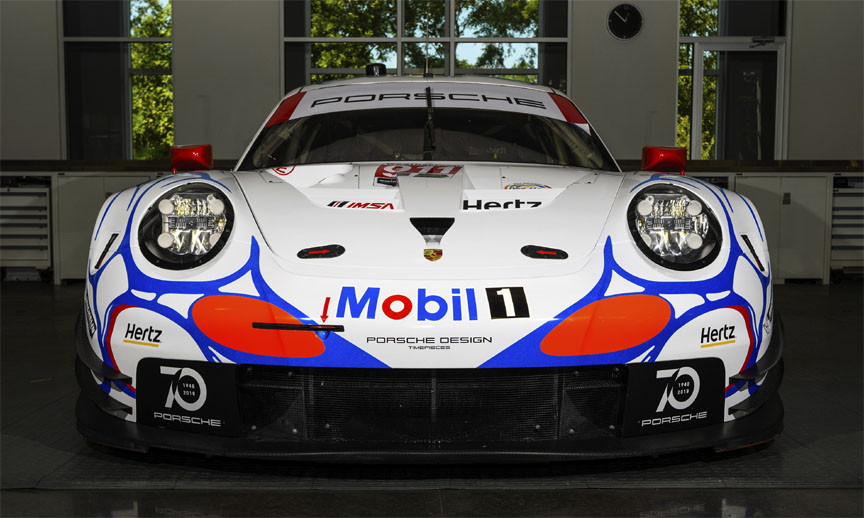
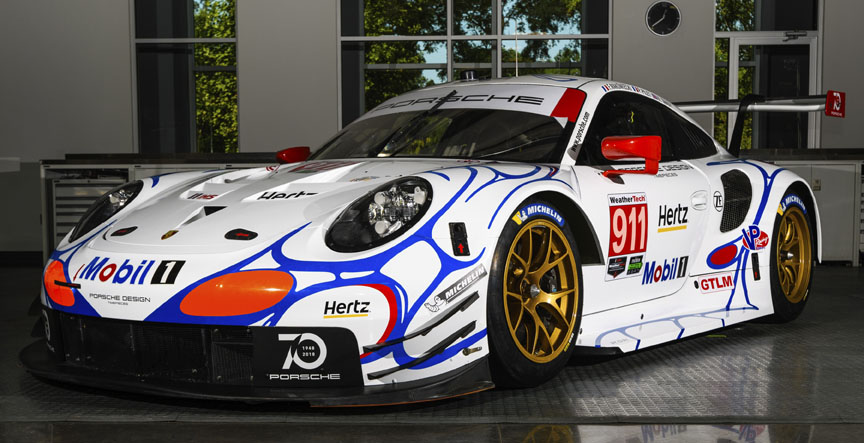
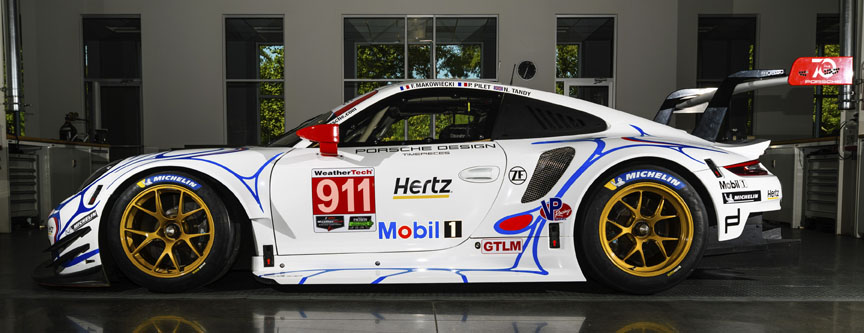
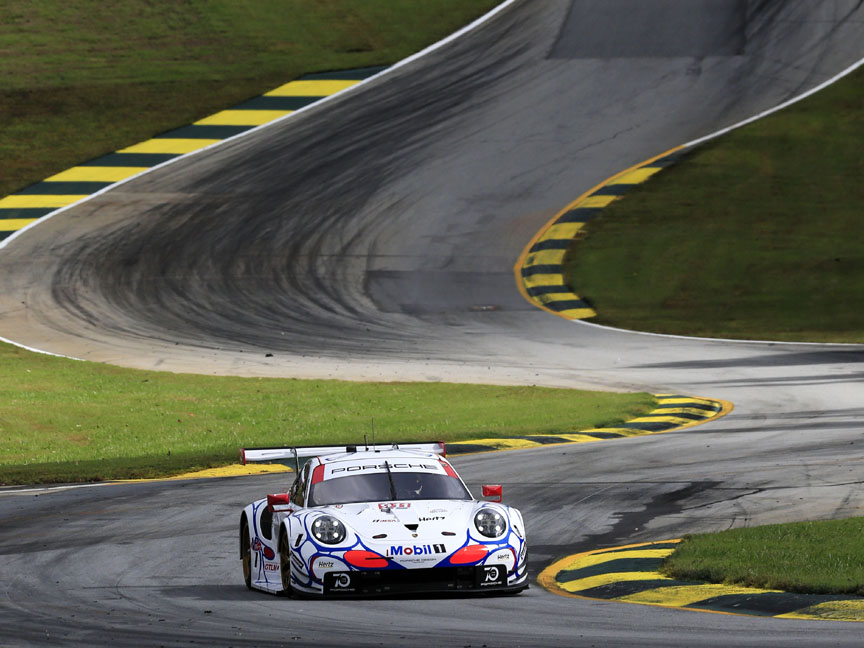
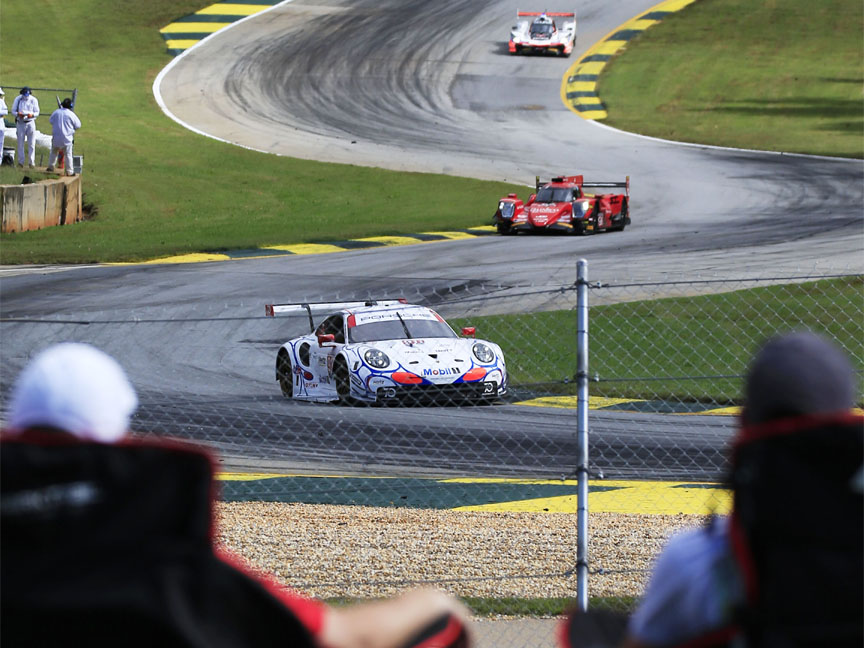
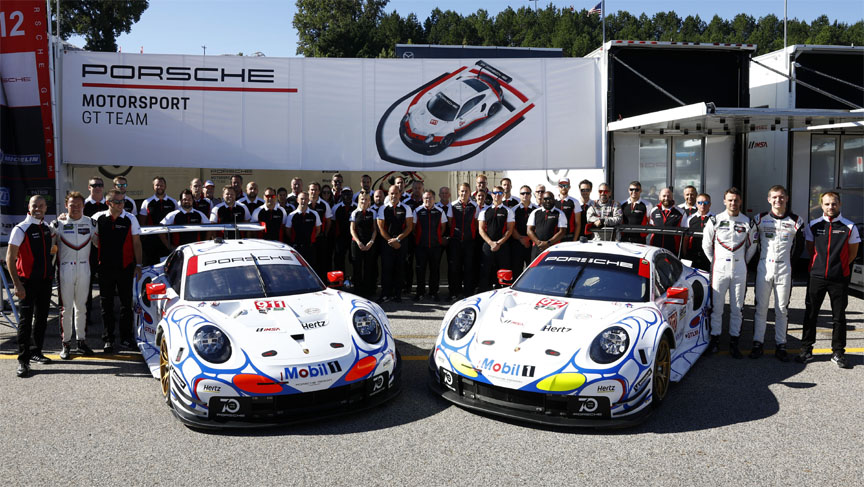
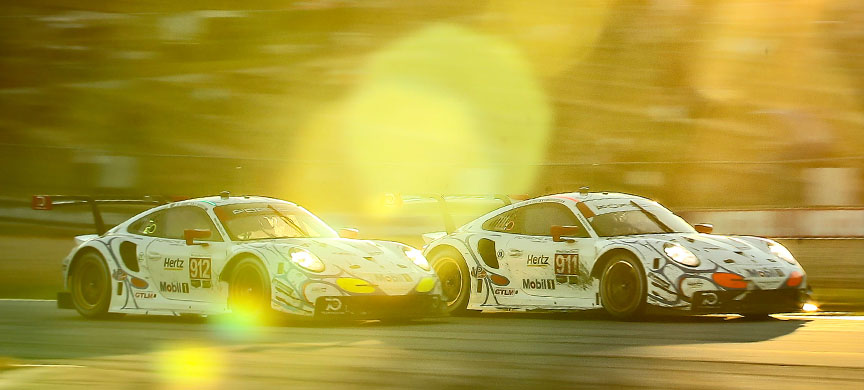
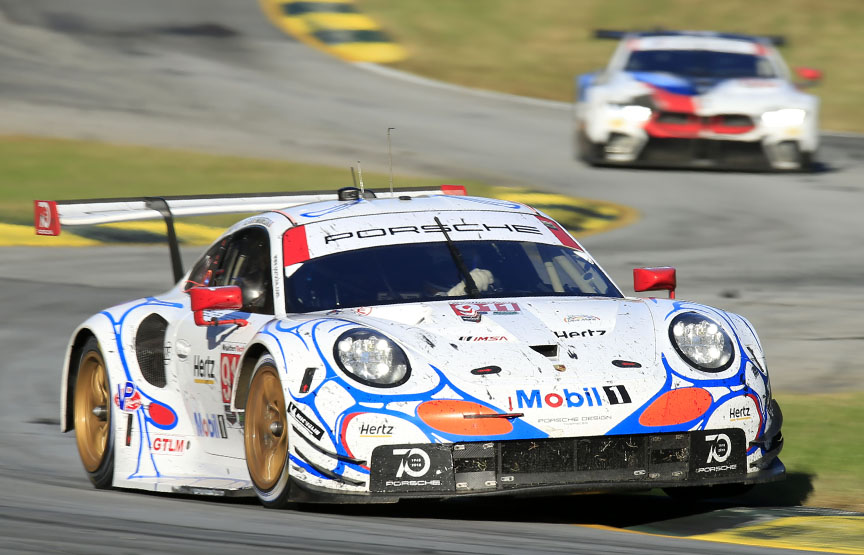
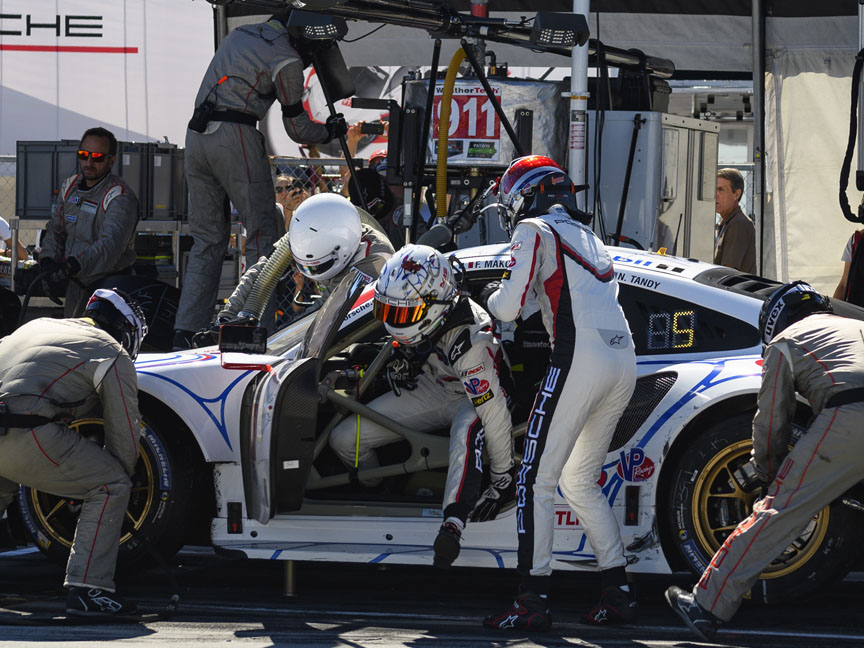
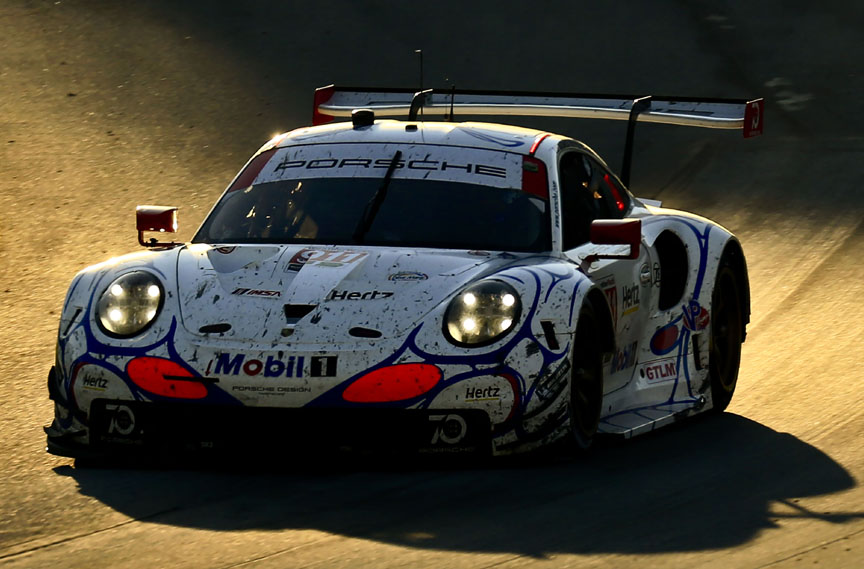
Overall victory went to a Cadillac DPi prototype followed by two Mazda DPi prototypes (all 443 laps). 7 cars finished the race on the same lap. The GTLM category saw similarly tense competition with 6 cars finishing on the same lap after 419 laps: Porsche 911 #911, Corvette, 2x BMW M8, Ford GT and the #912 Porsche.
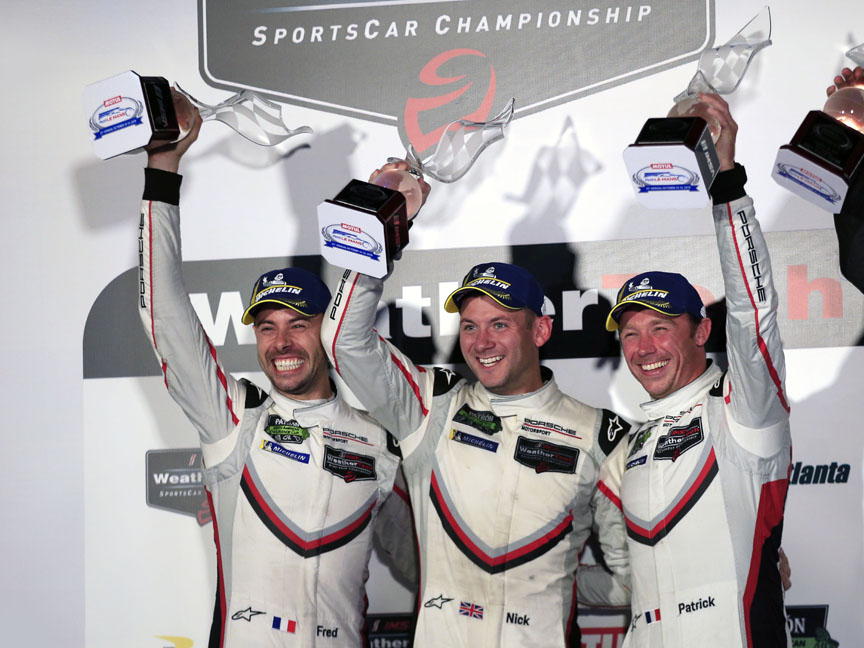
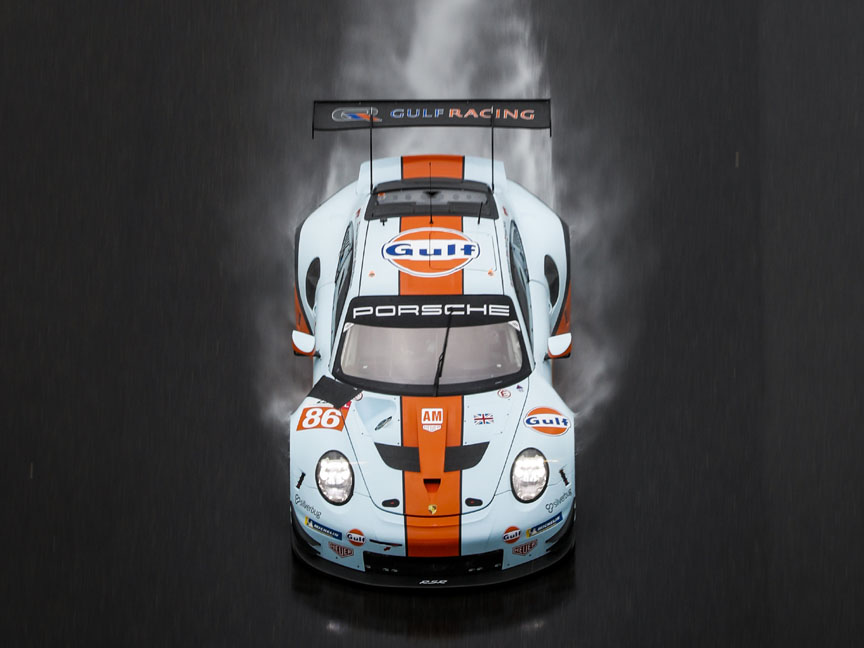
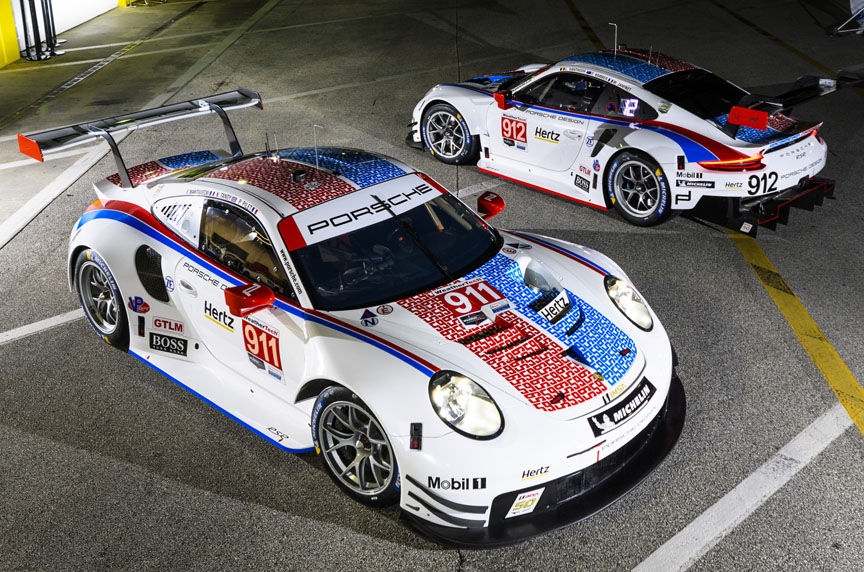
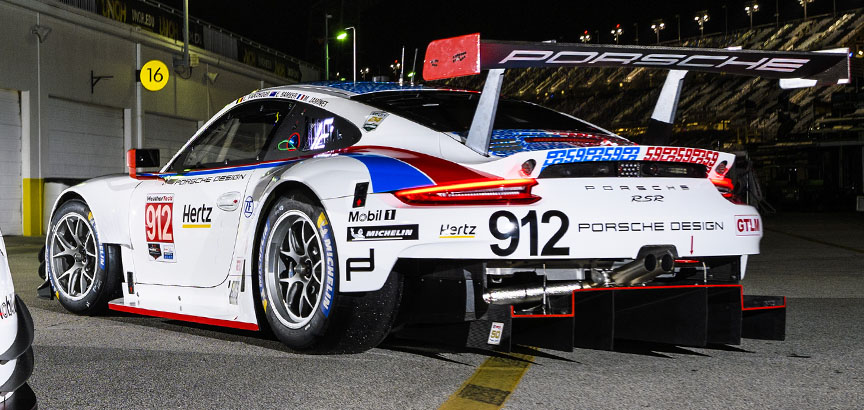
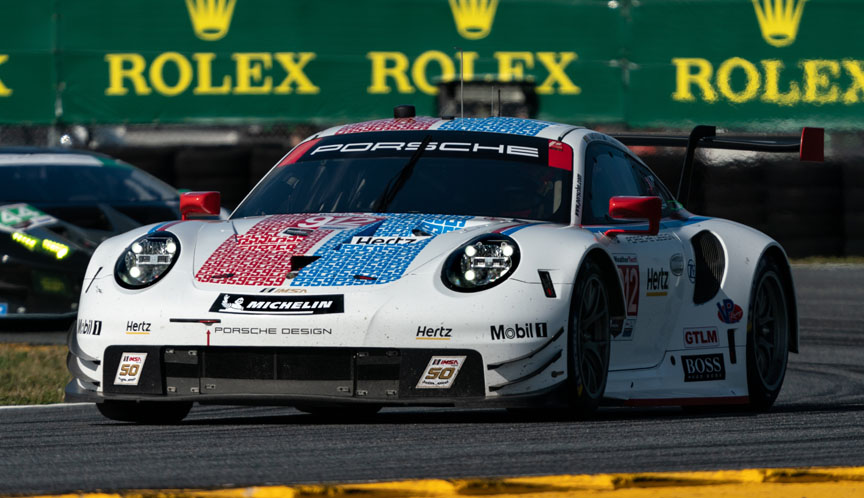
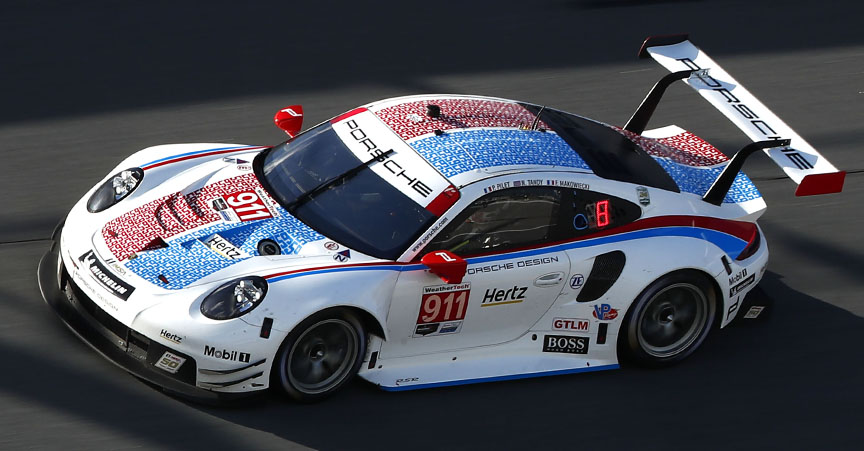
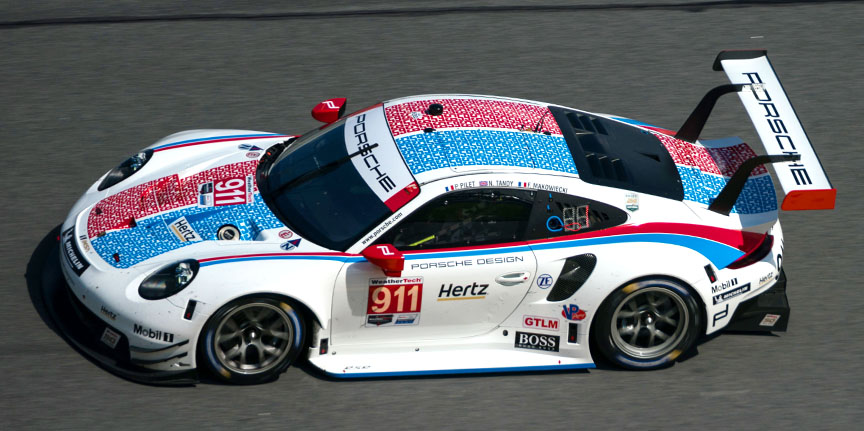
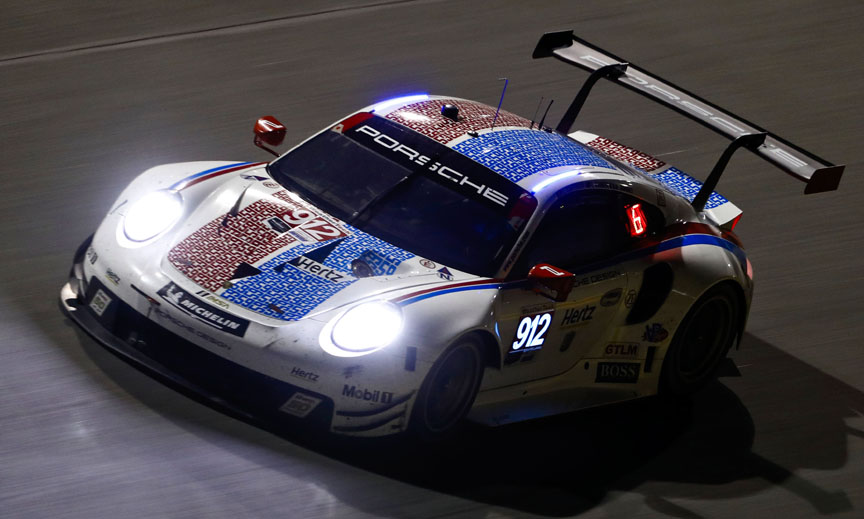
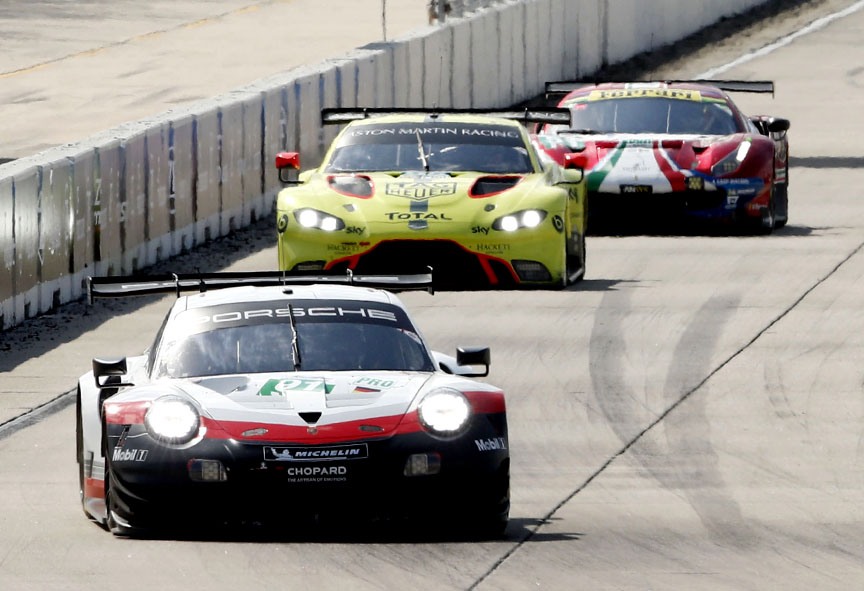
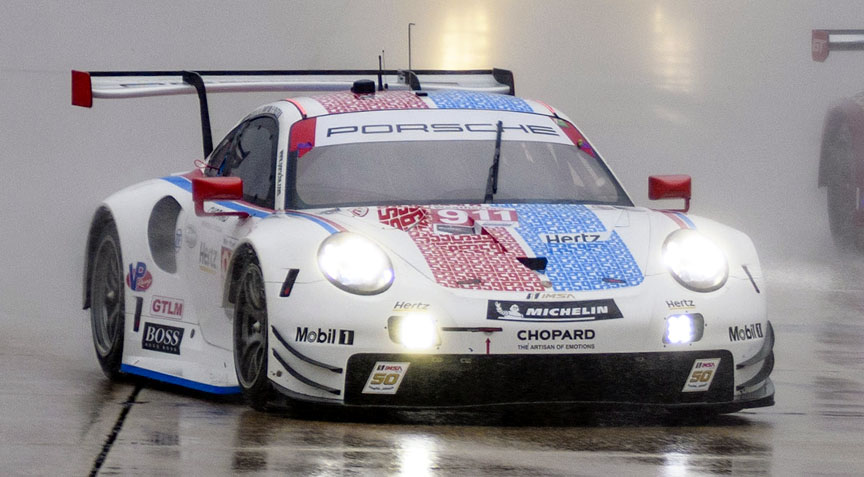
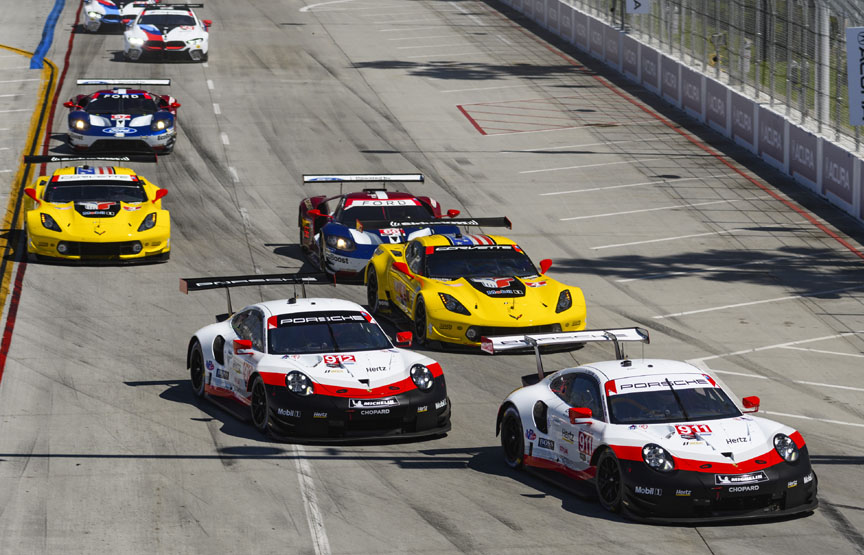
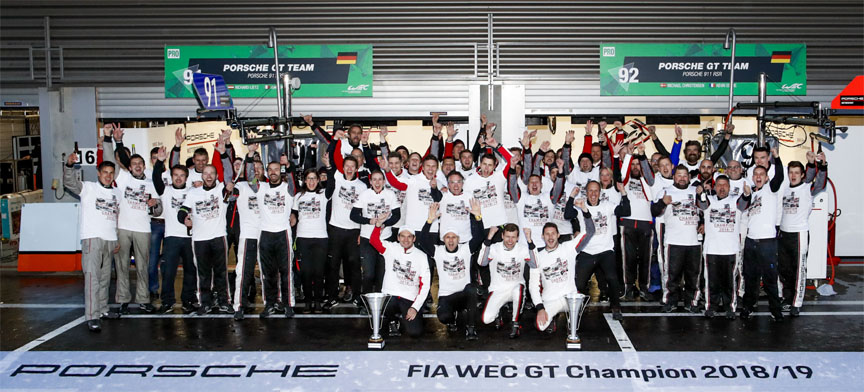

2019 Le Mans
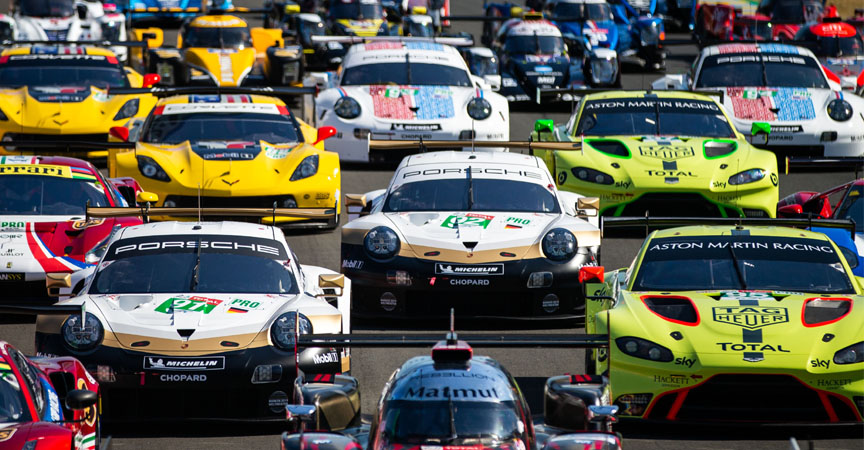
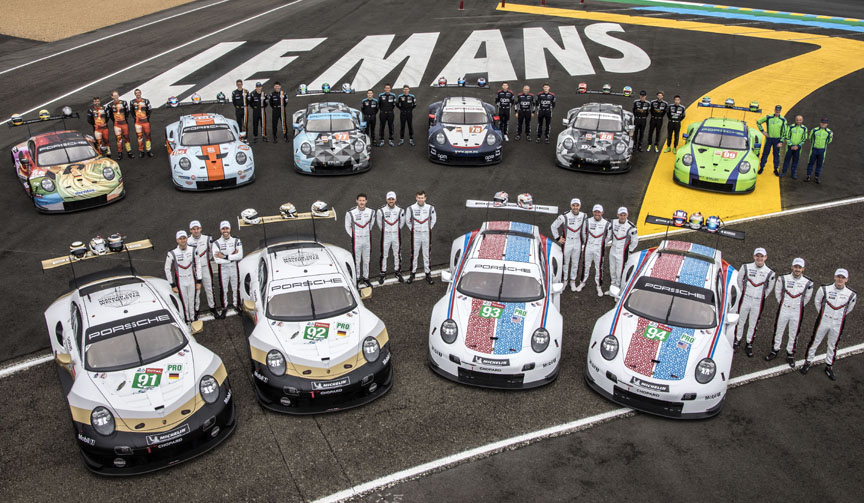
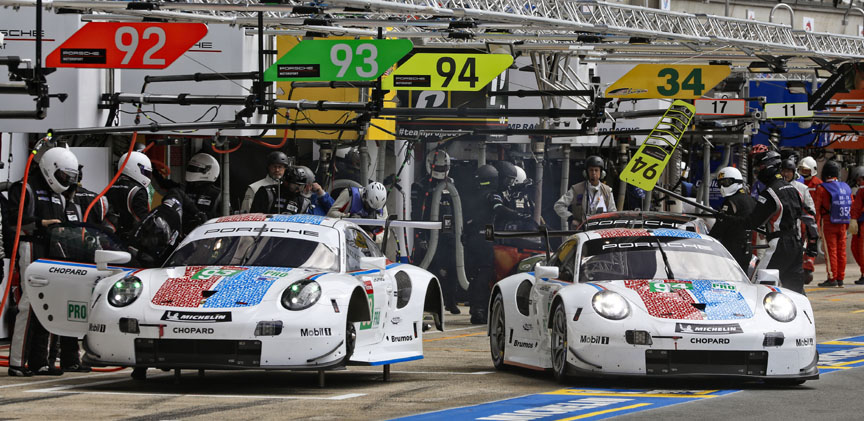
For the second year in a row, after Porsche had terminated its LMP1-Hybrid program, the most interesting and rivalling category at the Le Mans 24 hour race has been the GTE Pro. Thanks to the Balance of Performance (BoP) system all the cars are made really equal. The work of the BoP specialists can be appreciated when top 5 cars finish the 24 hour race on the same lap. Considering they did 342 laps and were on the same lap, their performance was within 0.3%. The GTE Pro 4th place Ford GT was disqualified after the race when it was found out that its fuel tank could carry 0.83 litres more fuel. Sounds like a bit too harsh judgement, but that’s how the quality of BoP is ensured.
Then, it was decided that the GTE Am winning Ford GT will also be disqualified. Its fuel tank could carry just 0.1 litres more fuel than allowed. Such a disqualification sounds already like unfair, but the judge’s decision is the judge’s decision. The second place Porsche 911 RSR #56 of Bergmeister/Lindsey/Perfetti became the 2019 Le Mans GTE Am class winner.
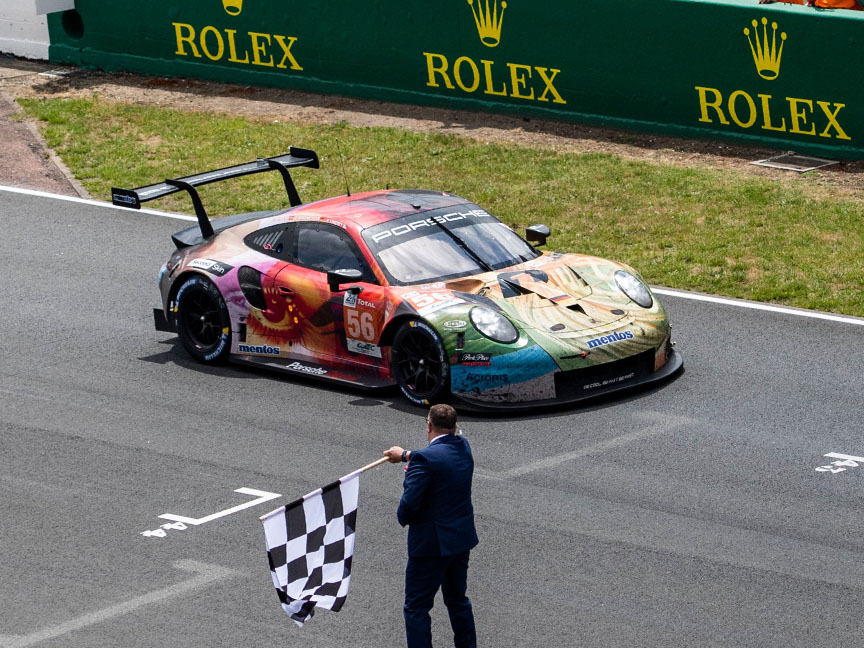
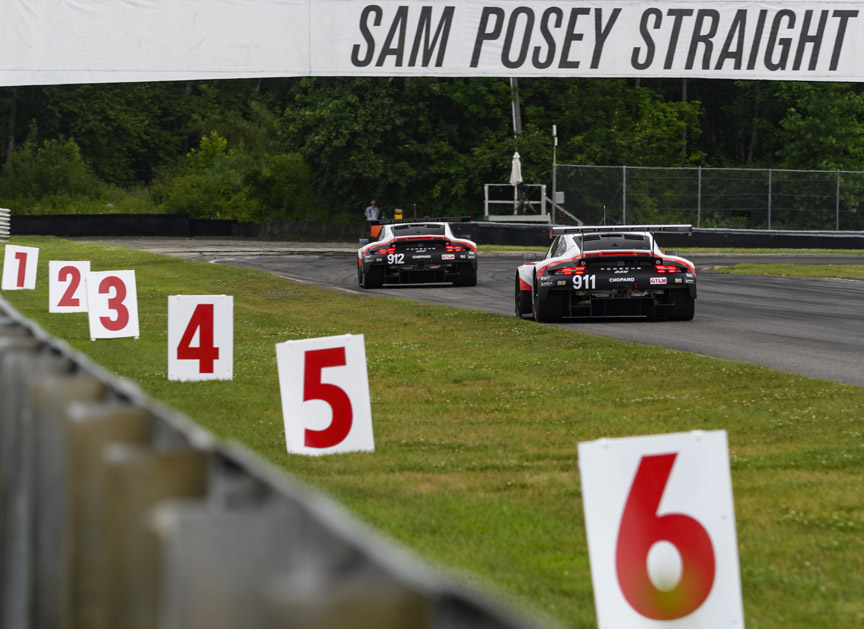

Press Release
New 911 RSR for Le Mans. 16/11/2016
The most spectacular nine-eleven ever: Porsche will tackle the 2017 racing season with an all-out newly developed GT racer.
The new 911 RSR makes full use of the breadth of the Le Mans 24 Hours GT regulations, and in addition to systematic lightweight design, features the ultra-modern, flat-six unit positioned in front of the rear axle. The four-litre, extremely light aggregate features direct fuel injection as well as a rigid valve drive and is characterised by outstanding efficiency. The new 911 RSR will make its debut at the Daytona 24-hour race in January 2017.
“While retaining the typical 911 design, this is the biggest evolution by now in the history of our top GT model,” says Head of Porsche Motorsport Dr Frank-Steffen Walliser. The new 911 RSR is a completely new development: the suspension, body structure, aerodynamic concept, engine and transmission have all been designed from scratch. The engine concept has enabled the designers to install a particularly large rear diffuser. Combined with a top-mounted rear wing adopted from the LMP1 race car, the 919 Hybrid, the level of downforce and the aerodynamic efficiency were significantly improved.
Porsche 911 RSR is powered by six-cylinder boxer engine family
“For the 911 RSR, we deliberately focussed on a particularly modern and light normally-aspirated engine, as this gave our engineers immense latitude in developing the vehicle,” explains Dr Walliser. “Apart from that, in principle, the LM-GTE regulations stipulate the absolute equality of various drive concepts, as the torque characteristics of turbo and normally aspirated engines are aligned.” Depending on the size of the restrictor, the new normally-aspirated unit puts out around 375 kW (510 hp).
The new 911 for the racetrack
Shift paddles on the steering wheel actuate the sequential six-speed gearbox with a magnesium housing, which delivers power to the 31-centimentre-wide rear wheels. The changeover to the new engine generation is now complete. After the 911 GT3 R and the 911 GT3 Cup, the spearhead of Porsche GT racing cars is now also powered by the same cutting-edge six-cylinder boxer engine family.
For the first time, the GT racer bears the new factory design
In the past, Porsche has already thoroughly pushed the limits with the concept of the 911 – in 1996 with the 911 GT1. With great success: In 1998 the 911 GT1 achieved the 16th overall victory for Porsche at the Le Mans 24-hour race. Back then, the fastest vehicle in the field emerged from the GT1 class.
For the first time, a Porsche GT race car features state-of-the-art assistance systems: the new 911 RSR is equipped with a radar-supported collision warning system, the so-called “Collision Avoid System”. Even in the dark, the faster LMP prototypes are detected early enough and misunderstandings can be avoided. A new safety cage concept and a new, rigidly-mounted racing seat enhance driver safety. With the seat fixed to the chassis, the pedalry can now been moved and adjusted to fit the driver.
The new 911 RSR’s serviceability has also been significantly improved: Entire elements of the carbon-fibre body can be exchanged completely in a very short time thanks to clever quick-release fasteners. Moreover, changes to the suspension setup can be performed much more quickly and easily.
With the look of the body wrapping, the 911 RSR is striking out in a new direction: For the first time, the GT racer bears the new factory design that has further developed the clear and dynamic design language of Porsche Motorsport. From a bird’s eye view, a hint of the Porsche emblem silhouette can be seen. The basic colours remain white, red and black.
The 911 RSR will celebrate its debut at the IMSA season opener in Daytona
In the 2017 season, the factory is expected to run the new 911 RSR at 19 outings which equates to more than 140 hours of racing. With two factory-entries, Porsche will tackle the FIA World Endurance Championship (WEC) including the 24 Hours of Le Mans as well as the American IMSA Weathertech Championship. The new racer will celebrate its debut under the toughest conditions at the IMSA season opener in Daytona on 28-29 January. “We’re very well prepared for this,” says Marco Ujhasi, Head of GT Works Sport. “Since its first rollout in Weissach in March this year we’ve covered 35,000 test kilometres on racetracks in Europe and North America – that’s more than in the development of any other Porsche GT racer.”


